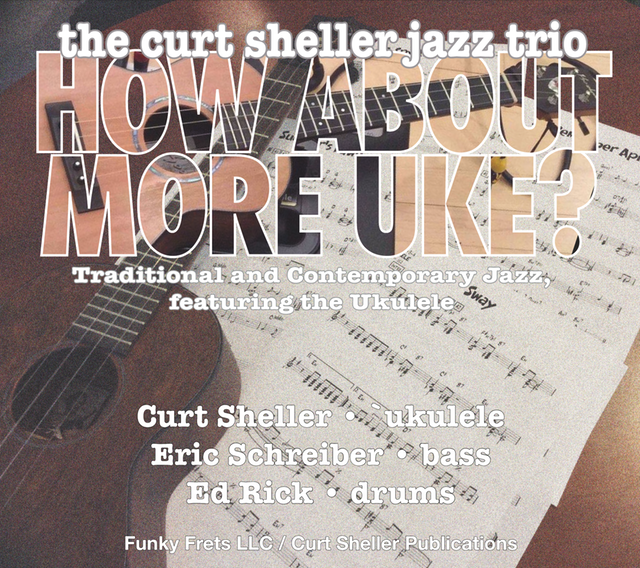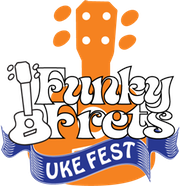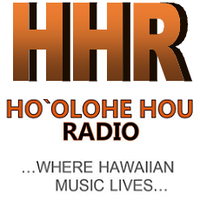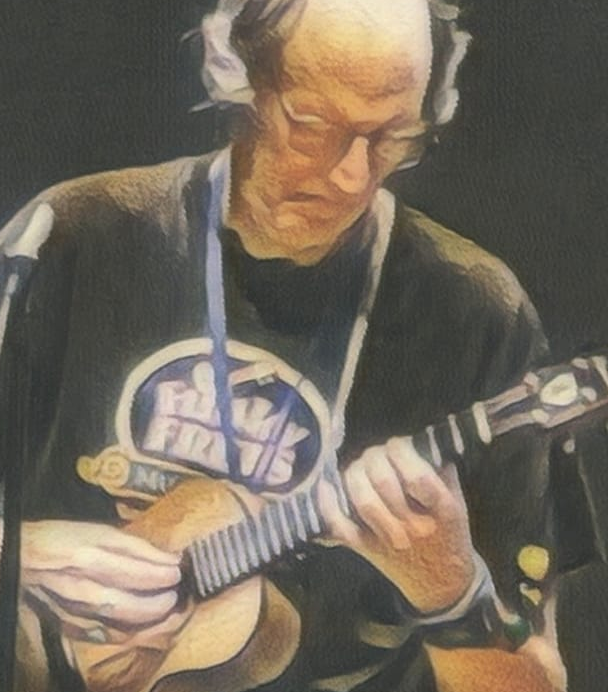indicates the lesson has downloadable PDF (based on membership level).
Basic Open Position `Ukulele Chord Chart
A core set of basic ukulele chords that ALL Ukulele players should know in the five common keys of C, G, D, A and E. With the possible seventh chords for the same common keys. The chart is organized in common keys and covers basic chords in these keys.
Movable `Ukulele Chords
A series of weekly ukulele lessons originally presented throughout 2007 on movable ukulele chords as the "Ukulele Chord of The Week Series". Based on the Ukulele Chords book by Curt Sheller (me). It takes the open position chords and shows the movable form and the variations.
Dominant Seventh Chords?
Not all seventh chords are actually "dominant" seventh chords. This lesson covers when is a Dominant Seventh Chord NOT truly a Dominant seventh?
Core `Ukulele Chords, Traditional and Contemporary Triads
A "Triad" is a three note chord. In traditional music theory, there are four triad chord types: major, minor, diminished, and augmented. Contemporary triads include sus and add.
Hearing the Changes
"Hearing The Changes" is knowing what the chords of a song or chord progression are and when they change. This lesson gets you on the road to developing this ability. This involves know the chords of the keys and scales that are used for common progressions and songs. And the ability to recognize the sound of intervals, the distance between intervals.
Types of `Ukulele Chords
Naturally, for Ukuleles, all chords need to be voiced using only the four strings available. You would think that this is limiting, when in actuality it's quite liberating when you learn the makeup of chords. Chords can be categorized into four categories: “Open Position Chords”, “Movable Form Chords”, “4-part - a.k.a. Jazz Chords”, and “Free Form Chords.”
Ear Training - Pitch Recognition
Ear Training is the development of the active and passive capability to relate to music aurally. This includes the ability to recognize melodic and harmonic intervals, chords, chords progressions, rhythm, melody, and harmony.
The Major Scale
Called the "learning scale" for a reason. The major scale is a great scale for learning how music and chords work. It’s a core scale from which a majority of your core, essential scales can be derived. There are 15 major scales.
The Chromatic Scale
The only scale in music with ALL twelve notes of one octave. Not much use for improvisation or solos – but a great scale for learning the notes of the ukulele fingerboard, figuring out scales, chords and more...
Free Form Chords
"Free Form" chords are those chords that do not fall into one of the other chord categories. They typically don't show up in chord dictionaries or software programs.
Creating Cool `Ukulele Chords
Cool Chords - These are the chords do not typically show up in chord dictionaries or song books. These are the chords players ask, "What is that chord?"
Music Basics
This series of lessons lays the foundation for the understanding of how music works – “The Principles of Music”. The lessons include information on understanding intervals, steps, Enharmonic Equivalents, the major scale, key signatures.
Chord Spelling - Triads
This lesson presents the traditional approach for learning the chord tones of chords with a little twist to make it a bit easier. A Chord is three or more notes sounded simultaneously - together or almost together. The minimum number of notes required for a chord are three. These three note chords are called triads. Two notes are usually referred to as an interval or dyad. Each note of a chord is called a chord tone.
Open Position Chords
The basic first chords most players learn. There are the chords in the first one, two, three and four frets of the ukulele and include at least one open string.
HZ - Frequencies
If you always wanted to know what Hz meant and how I could use it to tweak my sound. Knowing the frequencies, the HZ of the notes of the ukulele can help you to know what to cut or boost when it comes to sound.
Chord a Day, January 1st - C
Happy New Year - What better way than to start the new year off with learning a new ukulele chord every day of the year. The chord for January 1st is C. Originally start 2013, this is a great way to review and learn your chords.
Six Essential Scales for `Ukulele
The six essential scales are: Blues Major Pentatonic Mixolydian Dorian Aeolian and Ionian From the six essential scales, you can get through a wide variety of traditional and contemporary music. A scale is simply a collection of pitches or notes, not really a "this is a Jazz scale", "this is a Blues" or "this is a Rock scale". It's how a scale is used that really matters not its name.
Songs Using a Common 1 5 6 4 Chord Progression
There's actually a lot in common between songs when it comes to chord progressions. Here is an every growing list of songs that use the common 1 5 6 4 chord progression. This is a “Full Diatonic” chord progression, with each chord coming from its corresponding major scale. This common progression is called the “Four Chord, Pop Progression.”
The Learning Process - The Mind, Hands and Ears
For music and learning an instrument like the ukulele or guitar, it's all about the making the connection between your Mind, your Hands, and your Ear. When listening to music, we enjoy it at the tempo the composer or artist intended, in real time. Only the ear is involved in listening. This is passive listening and you're simply enjoying the music. This is what we do every day and it's what draws us to want to learn a musical instrument.
Whoo!!!, Too Many Chord Shapes to Memorize!!!
Too many chord shapes to memorize Hopefully, that is something you might have realized after three months into the Chord a Day saga. There are way too many chord shapes to memorize.
Chord a Day, January 9th - Cadd2
Learn a new Ukulele chord every day of the year. The chord for January 9th is Cadd2. Cadd2 is a great contemporary chord in wide use in a variety of styles.
What is the Difference Between a Scale and a Mode?
The terms "scale" and "mode" are often used interchangeably, but strictly speaking, there is a significant difference between them in music theory. Although they may share the same set of notes, a scale and a mode or modal scale are not the same thing. It's important to note that a scale and a mode can contain the same notes.
Core Chords - The Big Six - Building a Solid Chord Foundation
The Big Six Core Chords is a series of lessons for building your core, essential 4-part chords. These chords commonly called jazz chords, are really just 4-part chords used in a wide range of musical styles. These chords include: Seventh , Major Seventh, Minor Seventh, Half Diminished Seventh or Minor Seven Flat Five, Diminished Seventh, and Augmented Seventh. These six chords form a core set of chords.
Playing in Time
Playing in time is an essential skill that every musician must possess. There are no shortcuts or alternatives when it comes to this aspect of music. Keeping your place while playing is a crucial lesson that focuses on honing your ability to maintain a consistent tempo and rhythm throughout your performance.
How and Why To Use Metronome
A metronome is a device that produces an audible click or other sound at a regular interval that can be set by the user, typically in beats per minute (bpm).
Major Scale Fingering - Piano
Scale fingerings for the 15 Major Scales: C, G, D, A, E, B, F#, C#, F, Bb, Eb, Ab, Db, Gb, Cb.
Learning the `Ukulele Fingerboard (Finally!!!)
Most players struggle with learning the names of the notes of the ukulele fingerboard. There doesn't seem to a pattern and notes repeat. There is an easy way and "it's easier that you think." Most players know the names of the open strings for their favorite tuning.
Harmonic Analysis Lesson Series
Harmonic Analysis ( HA ) is the process used to determine the harmonic function of chords within a chord progression. A chord progression is defined as a sequence of chords, each chord has a root and has a particular chord type. The relationship of a chord's root to a scale determines its function within that scale's tonality. Once a chord's function is identified, scale selections along with chord and scale substitutions can be made. This process is called Root Movement Analysis ( RMA ). This series of lessons are extracted from my book for use with individual private and on-line students. Each lesson directly corresponds the chapters in my book Harmonic Analysis for Scale Selection and Chord Substitution by Curt Sheller (me).
Remembering Songs
Listening to songs and wanting to play the same songs on ukulele – that's what draws most people to the ukulele. That and it looks like a load of fun and easy to play – which it is. Then you need to actually remember the songs that you're learning, so you can play them again. And, hopefully, not have to read them off a sheet all the time.
Core Ukulele Chords - Sevenths
These chords are movable chord forms based on core 4-part seventh chords and triads with duplicated and/or omitted notes.
Blues Chord Progressions
The twelve bar blues and its many variants use an elongated, three-line form of the I - IV - V chord progression that has also generated countless hit records, including the most significant output of rock and rollers such as Chuck Berry and Little Richard.
4-part Contemporary Chords, a.k.a. Jazz Chords
Core Chords is a series of lessons for building your 4-part chords. These chords commonly called jazz chords, are really just 4-part chords used in a wide range of musical styles. Beyond basic open position chords, basic movable form chords and a core set of 4-part chords. There are just too many chords shapes too memorize. Learning the principles of how chords are constructed and the ukulele fingerboard are the way to go. Then you can create more advanced chords like 9#11, 7#5-9, 13b5, 7+9 on the fly as needed.
Resonator `Ukuleles
A Resonator ukulele or resophonic ukulele is a ukulele whose sound is produced by one or more spun aluminum cones (resonators) instead of the wooden soundboard (ukulele top/face). These instruments are sometimes referred to as Dobro ukuleles, however the term Dobro is currently trademarked by the Gibson Guitar Corporation.
`Ukulele Blues, Example D
"Major Quick Four Progression - Example D". From the book A Guide to Blues Progressions for Ukulele from A to Z.
Proper Fretting Hand Placement
Efficiency is the key to technique. This lesson shows the proper finger and thumb placement for the fretting hand.
Key Signatures - Introduction
A key signature is a summary of the sharps or flats in a Major or its relative Natural Minor scale. Key signatures are generally written immediately after the clef at the beginning of a line of standard musical notation. Each major and minor key has an associated key signature that sharpens or flattens the notes which are used in its scale.
Mixolydian Progression
The Mixolydian progression - "Sweet Home Alabama" by Lynyrd Skynyrd: This iconic rock song is built around a Mixolydian-based guitar riff. The chords used in the main progression are D-C-G, which are characteristic of the Mixolydian mode in the key of D.
Chord Spelling - An Alternate Approach
An alternate approach to determining the chord tones of any chord. Bottom-line is, it's the notes that make the chord, not the shape. A C chord is C, E, G - NOT this or that shape.
Selecting a `Ukulele
A `Ukulele is: Light Weight, Affordable and Portable | Four Strings and Four Fingers | Less Need for Strumming Accuracy | There is nott a lot expected from a ukulele player. The 'Ukulele (pronounced oo-koo-lele) comes in four standard sizes: Soprano (sometimes called Standard), Concert, Tenor and Baritone.
Key Signatures and the Circle of Fifths and Fourths
Traditional key signatures provide a wealth of information that can enhance our understanding of music and its underlying principles.
Key Signatures - C Major and A Minor
In music, it is important to learn and recognize the key signature for C Major and A Minor. These two keys have corresponding major and natural minor scales, along with basic ukulele chords that can be used with each scale. The key of C Major, also known as the learning key, is particularly easy to memorize and start using.
Key Signatures - G Major and E Minor
“G Major” (or the key of G) is a major scale based on G, with the pitches G A B C D E F#. Its key signature has one sharp: F#. Its Relative Minor scale is E Minor. Its Parallel Minor is D Minor.
Key Signatures - E Major and C Sharp Minor
"E Major" (or the key of E) is a major scale based on E, with the pitches E F# G# a B C# D#. Its key signature has four sharps: F# C# G# D#. Its Relative Minor scale is B Minor. Its Parallel Minor is E Minor.
Connecting Scale Positions on `Ukulele
Whether it’s connecting licks, riffs, scale positions, arpeggios, sequences or melodies – navigating the fingerboard and connecting the various positions - it’s all about using sound fingering principles. I’ve adapted Chuck Anderson's, The Six Secrets of Guitar Fingering to the ukulele in my book The Six Secrets of Ukulele Fingering. It’s from these six fingering principles that connecting positions and navigating the multitude of possible pathways on the ukulele can become second nature.
Exploring Jazz Chords on `Ukulele, Standard Example - Autumn Leaves
Using the jazz standard "Autumn Leaves" to explore jazz chords on ukulele.
Learning the Bo Diddley Strum
The Bo Diddley strum is named after Bo Diddley. Bo Diddley is an American R&B vocalist, guitarist, songwriter ( usually as Ellas McDaniel ), and rock and roll pioneer. He introduced more insistent, driving rhythms and a hard-edged electric guitar sound on a wide-ranging catalog of songs, along with African rhythms and a signature beat (a simple five-accent clave rhythm) that remains a cornerstone of rock and pop.
Reading Music on Ukulele Series - The Basics
Learning to read begins with recognizing the notes on the staff and knowing where they are located on the fingerboard. Knowing the name is also a essential skill.
Getting Started with `Ukulele - Lesson One
Got a ukulele, it’s in tune and your are now ready for your first ukulele lesson.
Traditional and Contemporary Triads
A "Triad" is a three note chord. In traditional chord theory there are four traditional triad chord types: major, minor, diminished and augmented. And four contemporary triad chord types: sus2, sus4, add2 and add9. Triads can be used harmonically, as chords and melodically, as single notes. Triads are a great way to get started with creating melodic solos and improvising.
Understanding Chord Symbols?
A chord's name is comprised of it's letter name, either A, B, C, D, E, F, or G and it's type information symbols which encapsulates the instructions for building a chord.
The Ultimate C Chord
You can’t play this chord on many other stringed instruments other than the ukulele. This is the ultimate C chord with only two C notes. In high G, C tuning three are the exact same C notes and a middle C.
Reading Ukulele TAB - Alternate Notation
"TAB" or "Tablature", is an alternate form of musical notation, which tells players where to place their fingers on a particular instrument rather than which pitches to play. TAB is sort of a secret language between guitar players and ukulele players. Although a shortcut to getting started it actually serves to alienate one from the rest of the music world.
Learning The Blues Scale on `Ukulele
Learn the Blues ( Minor Pentatonic ) and Pentatonic ( Major Pentatonic ) scales on ukulele. A practical approach to learning theses two essential scales using the Blues. These five note scales, the Major Pentatonic and the Blues or Minor Pentatonic scales are two of the most common scales used in contemporary music.
Naming Chords on `Ukulele
A Chord can have alternate names based on how it is being used. A chord's function is an important determining factor in naming a chord. So unless you know the harmonic function of a given chord, you might not be able to accurately name it.
Enharmonic Equivalents
An "Enharmonic Equivalent" is where a musical pitch can have different names depending on the context in which it is functioning. An example is G# produces the same pitch as Ab but have different standard notations when written in music.
Reading Music on `Ukulele Series - Reading in Open Position
This series of lessons will allow you finally, to check that Reading item off your music To Do list. Learning to read standard music notation opens a world of music to you. Music notation is the Lingua franca of amateur and professional musicians alike.
Cool `Ukulele Chords - A7
A cool chord is most likely a Free Form chord. A free form chord typically includes open strings, wide stretches, displaced chord tones and or chord voicings. Plus they just sound cool.
Understanding Interval Inversion
Inverting intervals using the "Rule of Nine". An interval is the distance between two notes. An interval has a name and a type. Intervals can be played one note (melodic) or two notes (harmonic) at a time, ascending or descending.
Key Signatures - D Major and B Minor
"D Major" (or the key of D) is a major scale based on D, with the pitches E F# G A B C#. Its key signature has two sharps: F# C#. Its Relative Minor scale is Bm Minor. Its Parallel Minor is D Minor.
Key Signatures - A Major and F Sharp Minor
"A Major" (or the key of A) is a major scale based on A, with the pitches A B C# D E F# G#. Its key signature has three sharps: F# C# G#. Its Relative Minor scale is F# Minor, Minor. Its Parallel Minor is A Minor.
Cool `Ukulele Chords - F Sharp Minor Seven Flat Five
F#m7b5 or F# half-diminished seven is a common chord in the key of G major and Em - especially Em.
The Four Chord Pop Progression
This is the most popular chord progression in use today. It has replaced the most common chord progression that was used in the 50s, the 1 6 2 5 chord progression.
Basic Open Position `Ukulele Chord Chart - Baritone Tuning
A core set of basic chords that ALL Ukulele players should know in common keys.
Reading for `Ukulele Series - C Tuning
This is a series of lessons for reading music for ukulele at a "Pro" level.
Piano Chords - Traditional Triads for Non Piano Players
Every musician, every hobbyists should know a few basic chords on a piano. Here is a super easy way to learn the four traditional triads: Major, Minor, Diminished, and Augmented. And, the inversions.
Cool `Ukulele Chords - G7
A non-traditional fingering for the G7 chord using the knowledge that the notes of a G7 chord are G B D F.
Natural, Sharp and Flat Notes of the `Ukulele Fingerboard - C Tuning
Standard music notation, the natural, sharp and flat notes of the ukulele fingerboard for C tuned ukuleles. Covers both high C and low G tuning variations.
Creating Introductions and Turnarounds for `Ukulele
Introductions are a composed or improvised pieces of music that introduce - sets the stage for - a song or composition. Introductions, or intro for short, are used in all types of music. In this lesson, the focus is on introductions in contemporary pop, rock, blues, country, folk and jazz styles.
Exploring Jazz ``Ukulele
Wikipedia defines "Jazz" as a musical art form which originated at the beginning of the 20th century in African American communities in the Southern United States from a confluence of African and European music traditions. The style's West African pedigree is evident in its use of blue notes, improvisation, polyrhythms, syncopation, and the swung note.
The Harmonized Major and Minor Scale Charts
The "Major Scale" or Ionian scale is a diatonic scale, made up of seven distinct notes, plus an eighth which duplicates the first one octave higher. In solfege these notes correspond to the syllables Do, Re, Mi, Fa, Sol, La, Ti/Si, (Do), the Do in the parenthesis at the end being the octave of the root.
`Ukulele Strums - Getting Started
One of the first skills a ukulele player learns is the art and craft of strumming – playing rhythm. This refers to an accompaniment technique suitable for the singer, singer/songwriter or someone who plays a support role for another instrument.
Modular Phonetic Rhythm, Level II Pairs Worksheet
Develop your ukulele strums vocabulary and sharpen your reading chops with the "Level II, Modular Phonetic Rhythmic Syllables — Pairs Worksheet".
Chord a Day, March 17th - F9
Learn a new Ukulele Chord a Day for every day of the year. The chord for March 17th is F9.
Primary Chords - C Major
The primary chords for any major key are the I, IV and V chords of its corresponding major scale. For C Major, the primary chords are: C, F, G, and G7. From the primary and secondary chords of a major key, countless songs and chords progressions can be played.
Basic Blues Progressions in F Major
Basic and Quick Change blues chord progressions in the key of F major using the core 7th chords from the Big Six series of lessons. This is great way to explore this core chord in various keys.
Repeating Note - Five Note, Single String Fingering Drills Starting with Fingers 4-3-1-2-3
Building on the single note, 1, 2, 3, and 4 finger basic gymnastics. Now with repeating note or two. This lesson starts with the finger combination: 4-3-1-2-3.
Melody and Chord Tips
Creating "Melody and Chord Arrangements", in theory are as simple as harmonizing the melody with a chord. Which is playing a chord that has the melody note as the top note of the chord voicing. In practice it is a little more involved, but not much more.
Building a Solid Jazz Chord Foundation for `Ukulele
Commonly called "Jazz Chords", these more sophisticated, contemporary chord voicings find their way into a wide variety of music forms and styles. This lesson is the first on the series that builds your core foundation for these chords.
Understanding a `Ukulele Chord Diagram
There're a lot different ways to show chord shapes, diagrams and images on a fretted instrument. This is the basic chord diagram I use in all my lessons and book. In this lesson the basic chord diagram as used for ukulele is explained.
Diminished Scale for `Ukulele - C Tuning
The "Diminished Scale" is a symmetrical scale with a repeating pattern of whole steps and half steps. You only need three Diminished scales to cover all 15 keys.
Which Way Is Up? - Up, Down, Ascending, Descending, etc...
Just what is "Up, Down, Ascending, Descending, Higher, Lower, Top, Bottom" as related to music?
Natural, Sharp and Flat Notes of the `Ukulele Fingerboard - G Tuning
The G Tuning comes in two versions where string four is either tuned to the "D", a major second below string one or low "D" where string four is a perfect fifth below string three. The G tuning with a low D is the same as the thin four strings of a standard tuned guitar.
`Ukulele Blues, Example J
"Diminished Seventh Passing Chord - Example J". From the book A Guide to Blues Progressions for Ukulele from A to Z.
Chord Substitution on `Ukulele
A chord substitution is when one chord replaces another chord or is used in addition to a current chord.
Demystifying Cut Time by Chuck Anderson
Cut Time is a source of confusion for many musicians. What exactly does it mean and how do you apply it? Here is a guest lesson by internationally renowned jazz guitarist and educator Chuck Anderson.
Playing by Ear - The Ultimate Goal
The ultimate goal for any musician when playing a musical instrument is to "Play by Ear". It’s true whether you’re singing, banging a drum, strumming a guitar, or our favorite instrument, the ukulele. If your fingers can already interpret and follow what your inner ear commands, you’ve obtained your goal and are "Playing by Ear."
Common Progressions, Major Keys
Every wonder why certain chords seem to popup together time and time again? All harmonic or chord movement in a chord progression is a combination of the active and passive quality of individual chords within the progression or song. Chords provide tension and resolution, the feeling of movement and non-movement in songs and progressions.
Alternating Thumb Style, Building a Solid Foundation - The Basics
As the subtitle of this Fingerpicking Basics lesson for Ukulele implies, this lesson's focus is on the alternating thumb part of the style. Commonly called Travis Picking on guitar and Scrugg's Style for banjo. For guitar it’s an alternating bass note style with the thumb playing the lower, bass notes.
QuickStart Chord Progressions, Blues Play-along Tracks
Four Premium practice play-along tracks for mastering and exploring the Blues scale. Suitable for any instrument.
QuickStart Chord Progressions, Mixolydian Play-along Tracks
Four Premium practice play-along tracks for mastering and exploring the Mixolydian scale. Suitable for any instrument.
QuickStart Chord Progressions, Aeolian Play-along Tracks
Four Premium practice play-along tracks for mastering and exploring the Aeolian scale. Suitable for any instrument.
Modular Phonetic Rhythm
"Modular Phonetic Rhythm" by Chuck Anderson represents a significant advance in the teaching and application of rhythm. Eliminating many inefficient aspects of rhythm education, Modular Phonetic Rhythm streamlines the traditional educational approach, resulting in a reflexive reaction to rhythm. This approach is applicable to all ages and to all styles of music.
Essential Jazz Scales for `Ukulele
After you mastering the six essentials scales below and start to explore more advanced styles of music, especially jazz. There are a few more scales that are needed to cover the broader harmonic palette that a typical jazz tune draws from.
Chord a Day, February 9th - Cadd9sus4
Learn a new Ukulele chord every day of the year. The chord for February 9th is Cadd9sus4
Chord a Day, March 8th - E7
Learn a new Ukulele chord every day of the year. The chord for March 8th is E7.
Chord a Day, March 29th - F7#9b5
Learn a new Ukulele chord every day of the year. The chord for March 29th is F7#9b5.
Chord Switching - Double Stops
Switching chords are all about finger independence and working together. This can be developed using the "double stop" fingering drills presented in this lesson. A "double stop" is a term borrowed from violin technique where you are stopping two strings or two notes - an interval.
Six Essential Scales - Aeolian/Natural Minor QuickStart Scale Shapes
QuickStart scale shapes summary for "Aeolian/Natural Minor", one of the six essential scales that every ukulele player should know. The scale formula for this scale, based on the major scale is: 1 2 b3 4 5 b6 b7 8´.
Six Essential Scales - Blues/Minor Pentatonic QuickStart Scale Shapes
QuickStart scale shapes summary for Blues/Minor Pentatonic, one of the six essential scales that every ukulele player should know.
Basic Blues Progressions in G Major
Basic and Quick Change blues chord progressions in the key of G major using the core 7th chords from the Big Six series of lessons. This is great way to explore this core chord in various keys. These are the two most common blues progressions used in traditional and contemporary music.
Basic Blues Progressions in E Major
Basic and Quick Change blues chord progressions in the key of E major using the core 7th chords from the Big Six series of lessons. This is great way to explore this core chord in various keys.
`Ukulele Strums and The Modular Phonetic Rhythm System
Strums are Inseparably Linked to Rhythm. Any strum can be broken down to its Modular Phonetic rhythmic syllables. Modular Phonetic Rhythm, by Chuck Anderson is a system for learning rhythm. It teaches rhythm phonetically - just as language does. Remember 'Strums ARE rhythm'
Developing Your Finger One Barre
The ability to place a single finger across more than one string, a “barre” is an essential technique for chords as well single notes and double stops.
The Andalusian Chord Progression
The "Andalusian" cadence is a term adopted from flamenco music for a chord progression comprising four chords descending stepwise. It is otherwise known as the minor descending tetrachord. Traceable back to the Renaissance, its effective sonorities made it one of the most popular progressions in classical music.
Backdoor Chord Progressions
In jazz and jazz harmony, the chord progression from IV7 to bVII7 to I has been nicknamed the backdoor progression or the backdoor II-V. This name derives from an assumption that the normal progression to the tonic, the II-V-I turnaround (II-V7 to I, see also authentic cadence) is, by inference, the front door. It can be considered a minor plagal cadence in traditional theory.
Fifties (1950s) Chord Progressions
Another common way of extending the I - IV - V sequence is by adding the chord of the sixth scale degree, giving the sequence I - vi - IV - V or I - vi - ii - V, sometimes called the 50s progression.
Three Chord Progressions
Three-chord tunes, though, are more common, since a melody may then dwell on any note of the scale. Often the chords may be selected to fit a pre-conceived melody, but just as often it is the progression itself that gives rise to the melody.
Basic Movable Form Chords
Sometimes called barre chords, these chords venture beyond the third fret.
Bass `Ukuleles
Four sizes of ukuleles are common: soprano, concert, tenor, and baritone. There's also the less common sopranino and the bass ukulele at the extreme ends of the size spectrum.
Banjo `Ukuleles
The Banjolele (brand name; sometimes banjo ukulele or banjo uke) is a four-stringed musical instrument with a small banjo-type body and a fretted ukulele neck. 'Banjolele', sometimes also spelled 'banjelele' or 'banjulele' is a generic nickname given to the instrument, which was derived from the 'banjulele-banjo' introduced by Alvin D. Keech in 1917.
Barre Chords
"barre", the old English spelling vs. bar which refers to a measure of music, is used to indicate a placing of a finger across two or more strings. If covering all the strings it's called a full barre and if fewer than all the strings it’s a partial barre. It’s a classical guitar technic used for guitar, ukulele, mandolin and other fretted string instruments regardless of style. In classical guitar notation, there are music symbols for indicating both a full barre, the letter C with option Roman numerals CVII for the fret position and a partial barre using a ¢VII with a line through it like a cent sign. Pretty rare for anything other classical guitar music.
What to Practice?
That is the age old question when learning a musical instrument. This lesson explores that foundation needed for various styles of music and what would you need to be successful with each style.
Navigating the C Major Scale
The C Major Scale is typically the first Full Diatonic major scale that most players learn. It’s the first scale to learn when stating to explore music theory - the principles of music.
Basic Single Note Drills for `Ukulele
Basic one, two, three and four note single string drills for ukulele for developing finger strength and independence. It's critical a player develop the finger strength and independence to explore their full musical potential. By developing a great fingerboard hand, you will be able to explore more challenging musical situations.
Introduction to Scales and Soloing on `Ukulele - Major Pentatonic
An "Introduction to Scales and Soloing on Ukulele" using the C Pentatonic Scale. Taking what you might already know and using it in different ways. Exploring the entire ukulele fingerboard have hours of fun just doodling around and exploring the ukulele's possibilities.
Upper Partial Chord Tones
Upper Partials or extensions for chords are the 9th, 11th, and 13ths of a chord. The 9, 11 and 13 can be altered chord tones depending on the type: e.g: b9, #9, #11, b13. These numbers, the 9, 11 and 13 refer to the scale tone/chord tone relative to the major scale used for building all chords.
Fingerstyle Basics for `Ukulele - t i m r, ( p i m a )
This lesson covers the common terms used for identifying the fingers used. And, presents a series of single string exercises for exploring and developing the techniques needed for this style.
Classic Endings for `Ukulele
Two Feel, bVImaj7 bIImaj7, Basie Ending, Single, Double and Triple Tags, Chromatic, Take 'A' Train Ending, Shave and a Hair Cut, Lawrence Welk Ending. These are common classic songs ending that are used over and over in the standard song repertoire.
Learning Core Seventh Chords on `Ukulele
Beyond basic open position chords, basic movable form chords and a core set of 4-part chords. There are just too many chords shapes too memorize. Learning the principles of how chords are constructed and the ukulele fingerboard are the way to go. Then you can create more advanced chords like 9#11, 7#5-9, 13b5, 7+9 on the fly as needed.
Core Chords - Creating the Big Six from F7, 4th Voicing
Taking a movable "F7" chord, you can derive each of the Big Six Core Chords. 7, maj7, m7, m7b5, dim7, and aug7 from that voicing.
Basic Open Position `Ukulele Chord Chart for Lefties
A core set of basic ukulele chords that ALL Left Handed Ukulele players should know in the five common keys of C, G, D, A and E. With the possible seventh chords for the same common keys. The chart is organized in common keys and covers basic chords in these keys.
Harmonic Analysis - Major and Minor Harmonized Chord Charts
Major and Minor Harmonized Chord Charts are used for while doing a Harmonic Analysis (HA). Shows triads and 4-part chords for ALL 15 major and minor keys. "Yes, Virginia there are 15 keys."
Harmonic Analysis - Worksheet and Examples
"Harmonic Analysis" is the understanding of the functional sequence of chords. It is the process used to analyze the harmonic structure of a progression, song or composition. A blank worksheet and examples for notating your harmonic analysis.
Chord a Day, January 11th - D7
Learn a new Ukulele chord every day of the year. The chord for January 11th is D7. This partial D7 is ofter referred to as the Hawaiian D7 chord after its use in the Chord sequence C D7 G7, a common turnaround in Hawaiian music. So much so that it's called the Hawaiian Turnaround.
Chord a Day, January 15th - Fm
Learn a new Ukulele chord every day of the year. The chord for January 15th is Fm.
Chord a Day, January 17th - E
Learn a new Ukulele chord every day of the year. The chord for January 17th is E.
Chord a Day, February 10th - A9
Learn a new Ukulele chord every day of the year. The chord for February 10th is A9
Chord a Day, February 11th - A13
Learn a new Ukulele chord every day of the year. The chord for February 11th is A13
Chord a Day, February 24th - A+
Learn a new Ukulele chord every day of the year. The chord for February 24th is A+.
Secondary Chords - C Major
The secondary chords for any major key are the II, III and VI chords of it's corresponding major scale. For C Major, the secondary chords are: Dm, Em and Am. From the primary and secondary chords of a major key, countless songs and chords progressions can be played.
Secondary Chords - A Major
The secondary chords for any major key are the II, III and VI chords of its corresponding major scale. For A Major the secondary chords are: Bm, C#m and F#m.
Common Chord Progressions for the Key of G
Common chord progressions for the key of G. Using the primary and seconday chords for the key explore these common chord progressions for the key of G.
Basic Blues Progressions in D Major
Basic and Quick Change blues chord progressions in the key of D major using the core 7th chords from the Big Six series of lessons. This is great way to explore this core chord in various keys.
Repeating Note - Four Note, Single String Fingering Drills Starting with Fingers 4-2-1-2
Building on the single note, 1, 2, 3, and 4 finger basic gymnastics. Now with repeating note or two. This lesson starts with the finger combination: 4-2-1-2.
Repeating Note - Five Note, Single String Fingering Drills Starting with Fingers 1-3-1-2-3
Building on the single note, 1, 2, 3, and 4 finger basic gymnastics. Now with repeating note or two. This lesson starts with the finger combination: 1-3-1-2-3.
Exploring Major Triads on `Ukulele Using a I IV I V Progression - Key of G
Exploring major triads using the primary chords of G major. Triads are one of the first chords that really bring to light the need to know the notes of the neck. This lesson shows the three voicings and the solutions for playing a common 1 4 1 5 progression using G, C and D triads on the string 1 2 3 set.
A to Z Blues Progressions, Example - D
Example D blues progression from my book "A Guide To Blues Chord Progressions For Ukulele A To Z".
A to Z Blues Progressions, Example - I
Example I blues progression from my book "A Guide To Blues Chord Progressions For Ukulele A To Z".
A to Z Blues Progressions, Example - M
Example M blues progression from my book "A Guide To Blues Chord Progressions For Ukulele A To Z".
A to Z Blues Progressions, Example - U
Example U blues progression from my book "A Guide To Blues Chord Progressions For Ukulele A To Z".
A to Z Blues Progressions, Example - Y
Example Y blues progression from my book "A Guide To Blues Chord Progressions For Ukulele A To Z".
The Big Six Core Chords - Fm6, Four Vocings
The Big Six Core Chords: "Fm6". This is the Level II of your core 4-part "Jazz" chords. The Fm6 is a 1 b3 5 6 of the major scale, based on the root of the chord. A minor 6th chord can be derived either from a minor seventh or major sixth chord. From a minor seventh chord lower the flat seventh one fret. From a major sixth chord lower the natural third one fret.
Major & Relative Minor Key Signatures
A "Key Signature" is a series of sharp or flat symbols placed on the staff, designating the notes that are to be consistently played higher or lower than the equivalent natural notes. Key signatures are generally written immediately after the clef at the beginning of a line of musical notation. Each major and minor key has an associated key signature that sharpens or flattens the notes which are used in its scale.
Harmonic Analysis - Conclusion
HARMONIC ANALYSIS for Scale Selection and Chord Substitution explored the six harmonic principles for analyzing chord progressions and songs using tradition tonic-dominant harmony and the scale modes.
Reading Music on `Ukulele Series - Reading in Open Position, Introduction
There are a few things in music that students and players avoid. These are things like learning to read and knowing the notes of their own instrument. It is hard on guitar - but not so hard on ukulele. With the right guidance and plan of attack. IT IS EASY. It is really quite easy on a uke. Starting with natural notes in in the open position you can finally check off the Reading Music to do item. Learning to read standard music notation is really, really easy.
Reading Music on Ukulele Series - Reading in Open Position, Strings One, Two and Three
Open Position Review - All the natural notes covered on string one, two and three comprise the C Major scale. Here is the fingerboard shape on ukulele.
Simple - Basic Chord Progression
Diatonic scales such as the major and minor scales lend themselves particularly well to the construction of common chords because they contain a large number of perfect fifths. Such scales predominate in those regions where harmony is an essential part of music, as, for example, in the common practice period of western classical music.
Getting Started with `Ukulele - Lesson Two
For Lesson Two we'll add and build on the lesson and material from lesson one.
Core Chords - Building a Solid Foundation of Contemporary Chords
"Core Chords" are a concept that I typically apply to 4-part chords and your more contemporary modern chords. This where a solid foundation of a core set of chords really help in learning the massive amount of chords that are required for play contemporary music or jazz on ukulele or guitar. Not such a task on ukulele with on one four string set of strings to build your 4-part chords vs. the theoretically possible 15 sets available for guitar.
Ukulele Chords - Triads, Strings 1 2 3
These chords are movable, three note chord forms. The triad is the chord
Learning the Ukulele Fingerboard - G Tuning Fingerboard Chart
The natural, flat and sharp note names of the ukulele fingerboard in :G Tuning, Low or High D". Common on the baritone ukulele and can also be used on a tenor ukulele.
Reading for `Ukulele - Lessons Five, Key Signatures, Flats
This lessons covers the natural symbol and the flat key signatures keys. In musical notation, a key signature is a collection of sharp or flat symbols placed together on the staff. Key signatures are generally written immediately after the clef at the beginning of a line of musical notation, although they can appear in other parts of a score, notably after a double barline. A key signature is use to indicate the “auto sharping or flatting of specified notes. Key signatures are also used to identify the key of a composition.
Six Essential Scales for `Ukulele - Pentatonic Scale Five Position Summaries
The five pentatonic scale positions - a summary. This is the first steps for most players in learning the pentatonic scales in various positions on the neck.
Concert `Ukulele
The "Concert" ukulele is sized in between the smaller Soprano ukulele and the tenor ukulele. A concert ukulele typically has 14 to 17 frets. The tuning for the Concert is most commonly G C E A, or C Tuning. The same as the Soprano and Tenor ukulele.
Solidbody Electric `Ukuleles
Most acoustic ukuleles can be plugged in with the addition of a internal pickup or stick-on pickup. This page focuses on purely "Electric Ukuleles". These are typically solid body instruments with pickups. Either magnetic pickups in the same vein as solid body guitar electric pickups or a piezo under the saddle pickups.
Advanced Guide to Chords - Chord Building Chart
Chords can be categorized into four basic chord types; Major, Minor, Diminished and Augmented. Here are the formulas for building the 11 basic 4-part chord types as well as the traditional triads. This chart can be used as a companion to any volume of The Advanced Guide to Guitar Chords and A Guide to Advanced Chords for Ukulele, which presents a highly organized and efficient approach to the mysterious subject of 4-part chords.
Bossa Nova
Bossa Nova is a genre of Brazilian music, which developed and was popularized in the 1950s and 1960s and is today one of the best-known Brazilian music genres abroad. The phrase bossa nova means literally “new trend”. A lyrical fusion of samba and jazz, bossa nova acquired a large following in the 1960s initially among young musicians and college students. Since its inception, it has remained a vital part of the standard jazz repertoire.
Every Finger, Every String
The benefits of being able to play melodies, lick, riffs starting on any finger on any string.
Tuning Your Ukulele
From tuning by ear to using an electronic tuner. The lesson goes over the various tuning methods for tuning your ukulele. You ALWAYS need to play in tune.
Common `Ukulele Tunings
Any tuning is possible on a ukulele, as long as the ukulele’s construction supports it and a string is available.
Comparing the High G and Low G, C Tunings
Exploring the differences in these two common C tunings, both the high G reentrant tuning associated with he ukulele and the low G variation. There are benefits to exploring both C tunings. Good excuse to have more ukes -:)
Chord Shapes and Learning `Ukulele Chords
Pick up any chord dictionary, and one thought that should go through your mind is - TOO MANY CHORDS There is now way to memorize all those shapes. It would be better off learning how they came up with all those shapes. Most chord dictionaries are also just like pages transposed to all possible keys.
Basic `Ukulele Chord Fingering
The art and science of chord fingering. Learning your basic open position chords in common keys. We have four fingers and there're all not equal. Some shorter then others and some stronger that others. Everybody's hand is a little different. This does play a role in fingering chords.
Natural, Sharp and Flat Notes of the `Ukulele Fingerboard - D Tuning
The D Tuning comes in two versions where string four is either tuned to the "A", a major second below string one or low "A" where string fours is a perfect fifth below string three. The D tuning with a low A is the same as the thin four strings of a standard tuned guitar with a capo at fret (7).
Exploring Improvisation on `Ukulele Using Tetrachords
Traditionally, a "Tetrachord" is a series of four tones filling in the interval of a perfect fourth. In modern usage a tetrachord is any four-note segment of a scale or tone row including the augmented fourth (+4). The term tetrachord derives from ancient Greek music theory, it literally means four strings.**
Practice Cycles and Sequences
Sequences and cycles for practicing scales, intervals, melodic sequences and arpeggios.
Exploring Core Chords on Guitar using Strings 1 2 3 4 and C Blues
Using chord "Voice Leading" principles we will explore all 4 voicings of core seventh chords using string family 1 2 3 4 chords.
The E/F Movable Barre Form Chord
The "E/F Movable Barre Form" chords are movable form chords based on the open position E, Em, E7, and Em7 chords. With the root on string six, these chords can be transposed to ANY key.
Key Signatures - F Major and D Minor
"F# Major" (or the key of F#) is a major scale based on F#, with the pitches F# G# A# B C# D# E#. Its key signature has six sharps: F# C# G# D# A# E#. Its Relative Minor scale is G# Minor. Its Parallel Minor is F# Minor and, its enharmonic equivalent is Gb minor.
Core Chords - Creating the Big Six from F7, 1st Voicing
Taking a movable "F7" chord, you can derive each of the Big Six Core Chords. 7, maj7, m7, m7b5, dim7, and aug7 from that voicing.
Core Chords - Creating the Big Six from F7, 2nd Voicing
Taking a movable "F7" chord, you can derive each of the Big Six Core Chords. 7, maj7, m7, m7b5, dim7, and aug7 from that voicing.
Fingerstyle on `Ukulele - Single and Multi String Exploration
Exploring fingerstyle on ukulele. This lesson covers the common terms used for identifing the fingers used. And, presents a series of single and multi-string exercises for exploring and developing the techniques needed for this style.
Which Way Is Up? - Up, Down, Ascending, Descending, etc...
What is up, down, higher, lower, top, bottom, ascending, descending on a guitar? Up, down, higher, lower, top, bottom, ascending, descending should refer to musical pitch and not to direction as we know it. Up and higher refers to the raising of musical pitch. Down and lower refer to the lowering of musical pitch. Top refers to the upper note of a chord voicing or musical phrase and bottom refers to the lowest note.
Ear Training
Ear Training is the development of the active and passive capability to relate to music aurally. This includes the ability to recognize melodic and harmonic intervals, chords, chords progressions, rhythm, melody and harmony.
Standard Music Notation
Music notation or musical notation refers to various systems of writing music. Diverse systems of musical notation have developed in various cultures. In fact, many cultures simply do not notate their music in any form.
Your First `Ukulele Chord
Your first ukulele chord is typically an open position "C Major Chord." It's only one finger and ukulele players love to show new players this, the easiest, usable ukulele chord for new players. Especially someone coming from guitar where an open position C major is three fingers and not that easy as the first chord.
Ukulele String Combinations
All possible one, two, three, and four string combinations on ukulele. Used for single note technique, fingerpicking, harmonic intervals, and chord string families.
Glossary of Music Terms
A glossary of common music terms. Common and not so common music terms. Knowing the language and terms used with music aides in your own understanding when exploring your music potential.
Harmonic Analysis - Chord Substitution Principles
A "Substitution" is when a chord replaces or is used in addition to an existing chord. Chords can have an active or passive quality to them. Active chords tend to be restless and want to move on to other chords. Passive chords tend to offer a feeling of rest and resolution. This cycle of active and passive chords are what gives chord progressions their feeling of movement.
Harmonic Analysis - Internal Modulation
Harmonic Analysis is the understanding of the functional sequence of chords. It is the process used to analyze the harmonic structure of a progression, song, or composition. This analysis is then used to make scale selections for improvisation and chord substitution. This lesson covers the Internal Modulation harmonic principle.
Harmonic Analysis - Basic Concepts
Harmonic Analysis is the process of determining the root movement of chords within a chord progression, the chord types that are used as well as identifying tonal centers. This root movement can be determined and categorized using one of six harmonic principles and the harmonized chord charts referenced in the lessons.
QuickStart Chord Progressions, Pentatonic Play-along Tracks
Four Premium practice play-along tracks for mastering and exploring the Pentatonic scale and suitable for any instrument.
QuickStart Chord Progressions, Dorian Play-along Tracks
Four Premium practice play-along tracks for mastering and exploring the Dorian scale. Suitable for any instrument.
QuickStart Chord Progressions, Ionian Play-along Tracks
Four premium practice play-along tracks for mastering and exploring the Ionian scale. Suitable for any instrument.
Modular Phonetic Rhythm, Level I Pairs Worksheet
Develop your ukulele strums vocabulary and sharpen your reading chops with the "Level I, Modular Phonetic Rhythmic Syllables — Pairs Worksheet".
Chord a Day, January 4th - G7
Learn a new Ukulele chord every day of the year. The chord for January 4th is G7
Chord a Day, January 6th - Em
Learn a new Ukulele chord every day of the year. The chord for January 6th is Em The 'm' is pronounced 'minor'.
Chord a Day, January 7th - Am
Learn a new Ukulele chord every day of the year. The chord for January 7th is Am The 'm' is pronounced 'minor'. This chord, discovered deep in the Lehigh Coal & Navigation Company's coal mine in Mauch Chunk, Carbon County of Pennsylvania by Am.
Chord a Day, January 14th - A7
Learn a new Ukulele chord every day of the year. The chord for January 14th is A7
Chord a Day, January 16th - Cm
Learn a new Ukulele chord every day of the year. The chord for January 16th is Cm.
Chord a Day, January 20th - D
Learn a new Ukulele chord every day of the year. The chord for January 20th is D.
Chord a Day, January 23rd - Gm
Learn a new Ukulele chord every day of the year. The chord for January 23rd is Gm.
Chord a Day, February 12th - A13
Learn a new Ukulele chord every day of the year. The chord for February 12th is A13
Chord a Day, February 22nd - F#m7b5
Learn a new Ukulele chord every day of the year. The chord for February 22nd is F#m7b5.
Chord a Day, March 6th - D7
Learn a new Ukulele chord every day of the year. The chord for March 6th is D7.
Chord a Day, March 19th - A9
Learn a new Ukulele chord every day of the year. The chord for March 19th is A9.
Chord a Day, March 24th - F7
Learn a new Ukulele chord every day of the year. The chord for March 24th is F7.
One Finger-One Note Basic Single String Fingering Drills for `Ukulele
To play the ukulele effectively, your fingers need physical strength, agility, flexibility and coordination. This one finger-one note drill is designed to get your fretting hand in shape.
Three Finger-Three Note Basic Single String Fingering Drills for `Ukulele
To play the ukulele effectively, your fingers need physical strength, agility, flexibility and coordination. This three finger-three note drill is designed to get your fretting hand in shape.
Common Chord Progressions for the Key of C Major
Sometimes called the “learning key”, the key of C Major is one of the easiest keys to memorize and begin using. C major (often just C or key of C) is a musical major scale based on C, with pitches C D E F G A B C. Its key signature has no flats or sharps. Its relative minor is A minor A B C D E F G A B.
Four Famous Core `Ukulele Strums - Pattern One
For ukulele there are four core, basic strums that will get you started. This is the first of the four core patterns.
Whole Steps and Half Steps Explained
The distance between any two notes can be defined by steps - half steps, whole steps, semi-tones, whole tones. From this series of steps you can get the names of the notes of ANY of the fifteen major scales.
Essential C Major Scale Patterns for `Ukulele
Essential C Major scale patterns for ukulele. Learning scales typically starts with learning a position or pattern by shape. For a lot of players that‘s where it stops. With the many possible shapes between chords and scales to learn - there has to be a better way - There is!!!
Six Essential Scales - Ionian/Major Chords
The Ionian/Major scale is one of the six essential scales that every ukulele player should know. Here are the chords for all 15 Ionian/Major scales. From the Ionian/Major scale all other diatonic and pentatonic scales can be derived.
Six Essential Scales - Pentatonic/Major Pentatonic QuickStart Scale Shapes
QuickStart scale shapes summary for Pentatonic/Major Pentatonic, one of the six essential scales that every ukulele player should know. The scale formula for this scale, based on the major scale is: 1 2 3 5 6 8`.
Primary Chords - D Major
The primary chords for any major key are the I, IV, and V chords of its corresponding major scale. For D Major, the primary chords are: D, G, A, and A7. From the primary and secondary chords of a major key, countless songs and chords progressions can be played.
Common Chord Progressions for the Key of A
Common chord progressions for the key of A. Using the primary and seconday chords for the key explore these common chord progressions for the key of A.
Learning the Fingerboard, C Tuning - Fret (10)
Fret (10) is a Secondary Key fret. From the key and secondary key frets, adjacent frets can be memorized relative to that fret.
Learning the Fingerboard, C Tuning - Secondary Key Frets
After learning the key frets, the secondary key frets start to fill in the remaining fingerboard of the ukulele.
Basic Blues Progressions in Bb Major
Basic and Quick Change blues chord progressions in the key of Bb major using the core 7th chords from the Big Six series of lessons. This is great way to explore this core chord in various keys.
Basic Blues Progressions in Eb Major
Basic and Quick Change blues chord progressions in the key of Eb major using the core 7th chords from the Big Six series of lessons. This is great way to explore this core chord in various keys.
Basic Blues Progressions in Ab Major
Basic and Quick Change blues chord progressions in the key of Ab major using the core 7th chords from the Big Six series of lessons. This is great way to explore this core chord in various keys.
Basic Blues Progressions in Db Major
Basic and Quick Change blues chord progressions in the key of Db major using the core 7th chords from the Big Six series of lessons. This is great way to explore this core chord in various keys
Repeating Note - Four Note, Single String Fingering Drills Starting with Fingers 1-3-1-2
Building on the single note, 1, 2, 3, and 4 finger basic gymnastics. Now with repeating note or two. This lesson starts with the finger combination “1-3-1-2”.
Repeating Note - Four Note, Single String Fingering Drills Starting with Fingers 2-3-1-2
Building on the single note, 1, 2, 3, and 4 finger basic gymnastics. Now with repeating note or two. This lesson starts with the finger combination: 2-3-1-2.
Repeating Note - Four Note, Single String Fingering Drills Starting with Fingers 4-1-1-2
Building on the single note, 1, 2, 3, and 4 finger basic gymnastics. Now with repeating note or two. This lesson starts with the finger combination: 4-1-1-2.
Repeating Note - Five Note, Single String Fingering Drills Starting with Fingers 1-2-1-2-3
Building on the single note, 1, 2, 3, and 4 finger basic gymnastics. Now with repeating note or two. This lesson starts with the finger combination: 1-2-1-2-3.
Repeating Note - Five Note, Single String Fingering Drills Starting with Fingers 1-4-1-2-3
Building on the single note, 1, 2, 3, and 4 finger basic gymnastics. Now with repeating note or two. This lesson starts with the finger combination: 1-4-1-2-3.
Repeating Note - Five Note, Single String Fingering Drills Starting with Fingers 4-2-1-2-3
Building on the single note, 1, 2, 3, and 4 finger basic gymnastics. Now with repeating note or two. This lesson starts with the finger combination: 4-2-1-2-3.
Repeating Note - Four Note, Single String Fingering Drills Starting with Fingers 4-3-1-3
Building on the single note, 1, 2, 3, and 4 finger basic gymnastics. Now with a repeating note or two. This lesson starts with the finger combination: 4-3-1-3.
Understanding Diatonic Intervals
An interval is the distance between two notes. An interval has a name and a type. Intervals can be played one note (melodic) or two notes (harmonic) at a time, ascending or descending. Simple and Compound Intervals are taken from a major scale. Chromatic Intervals are NOT taken from a major scale. They are derived from the diatonic intervals.
Open String, Two Finger Single Strings Fingering Drills
Using the original two finger-two notes single strings gymnastics, incorporate an open string. This develops the ability to get the finger on and off notes rapidly - getting out of the way when needed.
Alternating Thumb Style, Embellishments
Hammer-ons, Pull-offs, and Slides are the most basic embellishments and an integral part of rock, folk, country, bluegrass, and pop music styles.
`Ukulele Strums - Core Pattern 4.1
Another one of the 72 possible strumming patterns based of the Modular Phonetic Rhythm systems level II rhythmic syllables. A dotted quarter note and one eight note to four eight notes. Basically one rhythmic rhythmic syllable from the Modular Phonetic Rhythm tied to another syllable from the system.
`Ukulele Strums - Core Pattern 4.1T
Another one of the 72 possible strumming patterns based of the Modular Phonetic Rhythm systems level II rhythmic syllables. The last pattern in this series with the end of the first rhythmic syllable tied to the beginning of the second rhythmic syllable.
A to Z Blues Progressions, Example - F
Example F blues progression from my book "A Guide To Blues Chord Progressions For Ukulele A To Z".
A to Z Blues Progressions, Example - G
Example G blues progression from my book "A Guide To Blues Chord Progressions For Ukulele A To Z".
A to Z Blues Progressions, Example - H
Example H blues progression from my book "A Guide To Blues Chord Progressions For Ukulele A To Z".
A to Z Blues Progressions, Example - N
Example N blues progression from my book "A Guide To Blues Chord Progressions For Ukulele A To Z".
A to Z Blues Progressions, Example - O
Example O blues progression from my book "A Guide To Blues Chord Progressions For Ukulele A To Z".
A to Z Blues Progressions, Example - Q
Example Q blues progression from my book "A Guide To Blues Chord Progressions For Ukulele A To Z".
A to Z Blues Progressions, Example - T
Example T blues progression from my book "A Guide To Blues Chord Progressions For Ukulele A To Z".
A to Z Blues Progressions, Example - V
Example V blues progression from my book "A Guide To Blues Chord Progressions For Ukulele A To Z".
The Big Six Core Chords - F6, Four Voicings
The Big Six Core Chords: "F6". This is the Level II of your core 4-part "Jazz" chords. The F6 is a 1 3 5 6 of the major scale, based on the root of the chord. A major 6th chord can be derived either from a seventh or major seventh chord. From a seventh chord lower the flat seventh one fret. From a major seventh chord lower the natural seventh two frets.
Exploring Jazz Chords on `Ukulele, Standard Example - All of Me
Using the jazz standard "All of Me" to explore jazz chords on ukulele.
Exploring Jazz Chords on Ukulele, Standard Example - Summer Samba
Using the jazz standard "Summer Samba" to explore jazz chords on ukulele.
Exploring Jazz Chords on Ukulele, Standard Example - Sweet Georgia Brown
Using the jazz standard "Sweet Georgia Brown" to explore jazz chords on ukulele.
Exploring Jazz Chords on Ukulele, Standard Example - Yesterday
Using the classic Beatles cone by Paul McCartney "Yesterday" to explore jazz chords on ukulele.
Exploring Jazz Chords on Ukulele, Standard Example - It's Only a Paper Moon
Using the jazz standard "It's Only a Paper Moon" to explore jazz chords on ukulele.
Rhythm and Strums Level II Rhythmic Pairs - Lesson One
Level II Rhythmic Syllables 1 of 6 and 2 of 6 from the Modular Phonetic Rhythm, The Foundation and Workbook 1 book.
Learning the Fingerboard, C Tuning - Derived Frets from Key Frets
"Derived Frets from Key Frets" are the next higher frets or previous lower frets you get from your Key Frets in C Tuning. You basically get these higher and lower frets for FREE.
Learning the Ukulele Fingerboard - Natural and Sharp Names
A handy reference chart of the Natural and Sharp Names for C Ttuning, Low or High G.
Fingerpicking for Ukulele - Getting Started
There are two distinctly different Fingerpicking Styles. The Classical (pima) and "Alternating Thumb Style" commonly called "Travis Picking" in the guitar world and "Scruggs Style" in the banjo world. The focus of this series is on the classical (pima) style.
The Big Six Core Chords - F7, four voicings - Chord Tones
Learning the locations of the chord tones - the actual names of the "F7" chords, the foundation chord for our Big Six Core Chords.
The Big Six Core Chords - F7, Four Voicings, Learning Process
The Big Six Core Chords - "F7", four voicings. From shape to chord tones to intervals and back again. Really, learning what a chord is made of.
Quarter Note Strum - Variations
Building on the basic Quarter Note Strum lessons, here are four variations to get you started.
Improvising Using Major Triads Plus One Note
Using Major Triad Arpeggios - Plus One for Creating Melodic Solos. With chord tones, the notes of a chord playing a predominant role in writing melodies and in improvised melodies. The triad plus one additional note is a great melodic device for creating melodies - either written or improvised.
Reading Music on Ukulele Series - Reading in Open Position, String One
From the available natural notes in open position there are three notes on string one. A, B and C. The Open Position is the open strings and frets one, two, three and four.
Reading Music on Ukulele Series - Reading in Open Position, String Two
From the available natural notes in open position there are three notes on string two. E, F and G.
Reading Music on Ukulele Series - Rest and Ties
A tie extends the rhythmic value of the first note by the value of the next note. Ties can span multiple notes. Rests are symbols for silence. Each note each has an equivalent symbol for silence.
Reading Music on Ukulele Series - Reading in Open Position, What About String Four?
"C Tuning, Low G", extends the melodic range to G below middle C. This expanded range allows for a wider selection when selecting songs to play. The G, A and B are the same names as a high string four but sounding one octave lower.
Reading Music on Ukulele Series - Reading in Open Position, Songs
The following songs can be played in open position using the natural notes covered in the previous lessons of this primer. These songs do not use any signatures, no time signature or key signature is shown. All songs are played with a quarter note taking one beat.
Reading Music on Ukulele Series - Tuning Your Ukulele
It is important to always have your ukulele in tune. This lesson covers the various ways of getting you ukulele in tune.
Core Chords for Ukulele - Diminished Major Seventh, Four Voicings
A rare chord, a diminished triad with a major seventh. Used the support the melody when the melody is the major seventh.
Upper Partials and Chord Extensions
A chord extension or upper partial are the chord tones above the octave and not one of the fundamental 4-part chord tones. These are the ninths, elevenths and thirteenths of chords. All chord extensions on ukulele will displace a fundamental chord tone. This is even true for guitar with the ability to add the extension to another string.
Chord Alterations
The "fifth", "ninth", "eleventh" and "thirteenth" of a chord can be altered. Alterations can be applied 1, 2 and 3 at a time. The alternations give a chord added color or tension.
Getting Started with Ukulele - Introduction
Here are the first suggested lessons that ALL my private students and site members get. This series of lessons lay the foundation and establishes common musical terminology for communication and future lesson material. The whole goal of this series of lessons under the "Getting Started with Ukulele" lessons series is to get you playing basic chords in common keys using the common strums.
Getting Started with `Ukulele - Lesson Three
For Lesson Three we'll add and build on the lessons and material from lesson two.
Open String Fingering Fingering Drills
Open string fingering gymnasics build on the basic one, two, three and four finger single note - single strings drills.
Practice Tips for A to Z Blues Chord Progressions for `Ukulele
This is a lesson with practice tips for getting the most out of each of the blues progressions in my book A to Z Blues Chord Progressions for Ukulele.
Learning the `Ukulele Fingerboard - D Tuning Fingerboard Chart
The natural, flat and sharp note names of the ukulele fingerboard in D tuning, low or high A.
This tuning was common in the first and second ukulele craze. It is also the tuning that is used in the Canadian school system.
Reading for `Ukulele - Lesson Two, Note Recognition
Once you understand the basic concept of reading, it’s time to get down to the development of the skills. We know our goal is to read music as well as we read words. Now, how do we get there? Note Recognition - If you can’t recognize the notes on the staff, you certainly can’t read them. For anyone who is past this step, great! But in many cases, the recognition of notes on the staff is not as good as it should be. If you can’t read music, this skill doesn’t exist at all.
Reading for `Ukulele - Lesson Four, Key Signatures, Sharps
This lessons covers the natural symbol and the sharp key signatures keys. In musical notation, a key signature is a collection of sharp or flat symbols placed together on the staff. Key signatures are generally written immediately after the clef at the beginning of a line of musical notation, although they can appear in other parts of a score, notably after a double barline. A key signature is use to indicate the “auto sharping or flatting of specified notes. Key signatures are also used to identify the key of a composition.
Reading for `Ukulele - Lesson Six, Ties
This lessons's work will advance rhythm by introducing Ties. Many ukulele players can find the notes on their instrument but can't read rhythm with enough accuracy and speed to be considered "sight readers". Remember that sight reading is just a level of reading. It's not some special and mysterious skill. When you read a book or magazine, you don't have to "work out" the words before you "read" them. You just read them.
Reading for `Ukulele - Lesson Seven, Rests & Position II
Lesson seven covers reading in position II. After spending time on open and first position, we're ready to move into the second position. The second position is defined as the notes on frets 2, 3, 4 and 5 on all four strings.
Reading for `Ukulele - Lesson Eight, Position III
After spending time on open, first and second position, we’re ready to move into the third position. The third position is defined as the notes on frets 3, 4, 5 and 6 on all four strings.
Improvising Using Diminished Triads Plus One Note
Using Diminished Triad Arpeggios - Plus One for Creating Melodic Solos. With chord tones, the notes of a chord playing a predominant role in writing melodies and in improvised melodies. The triad plus one additional note is a great melodic device for creating melodies - either written or improvised.
Improvising Using Augmented Triads Plus One Note
Using Augmented Triad Arpeggios - Plus One for Creating Melodic Solos. With chord tones, the notes of a chord playing a predominant role in writing melodies and in improvised melodies. The triad plus one additional note is a great melodic device for creating melodies - either written or improvised.
Reading Music on `Ukulele Series - Primer
There are a few things in music that students and players avoid. These are things like learning to read and knowing the notes of their own instrument. It is hard on guitar - but not so hard on ukulele. With the right guidance and plan of attack. IT IS EASY.
The Muted Strum
The muted strum is executed by relaxing the chord hand during the strum. If the chord is a barre, relaxing the pressure is enough to create the percussive, drum like effect. If holding an open chord, the fingers relax but maintain enough finger pressure to get the muted sound. This is what a few players are calling, The Universal Muted Chord. You're utilizing your ukulele as a percussive instrument and there is no discernible pitch - just like a drum. This chord works on any song just as a drum works with any song and does't care what the key is. This is a great chord to use when learning a new strum.
Tenor `Ukuleles
Next size up from the Concert ukulele is the Tenor ukulele. A tenor ukulele typically has 17 to 19 frets. The most common tuning for a tenor ukulele is G C E A, or 'C' Tuning. The same as the Soprano and Concert ukulele.
Secondary Dominant V of ...
A "Secondary Dominant" chord is defined as any seventh chord built on a scale root that is diatonic to the key that resolves up a perfect fourth or down a perfect fifth to a full diatonic chord. These chords function as a dominant (V) chord to the next chord, serving to temporarily tonicize the following chord.
Essential `Ukulele Strums - A Guide to `Ukulele Strums
One of the first skills a ukulele player learns is the art and craft of strumming, playing rhythm. This refers to an accompaniment technique suitable for the singer - songwriter or someone who plays a support role for another instrument.
Navigating the C Major Scale - Low G
The first lesson on Navigating the C Major Scale did not include string four when using C Tuning - High G. I mentioned that mastering the positions and scale using strings three, two and one would set you up for expanding any position to the lower string four.
Creating Intros, Basic I V on C Major
A basic I V introduction in the key of C major: C to G or G7. The Tonic to Dominant.
I Idim7 II V Introduction in Key of C
"I Idim7 II V in key of C" — A classic introduction and chord progression utilized in show tunes and old-time music.
Effect Pedals and the Ukulele
Typically effects pedals are not used with the ukulele. However there is no reason they can’t be used.
Example Bossa Nova Patterns
Here are few example rhythmic patterns to get the essence the Bossa Nova style.
How to Spell ʻUkulele
How to spell \Ukulele and actually get all those crazy Hawiian characters on your computer, iPad, iPhone, and more. A guest lesson form Patrick Moffitt.
Take Me Out To The Ballgame
Harmonic Analysis (RMA) Worksheet for the song: "Take Me Out To The Ballgame".
Leciono Uno for TeStInG - CSP
Fred Flintstone is the main character of the animated sitcom The Flintstones, which aired during prime-time on ABC during the original series' run from 1960 to 1966. Fred is the husband of Wilma Flintstone and father of Pebbles Flintstone. His best friend is his next door neighbor, Barney, who has a wife named Betty and an adopted son, named Bamm-Bamm.
Advanced Single Note Fingering Drills for `Ukulele
To develop strong and independent left hand technique these series of graduated drills or finger gymnastics will increase your the comfort zone of usable technique. This lesson expands basic single string drills using multiple strings.
Altered Seventh Chords on `Ukulele
Beyond basic open position chords, basic movable form chords, and a core set of 4-part chords. There are just too many chords shapes too memorize. Learning the principles of how chords are constructed and the ukulele fingerboard are the way to go. You can then create more advanced chords like 9#11, 7#5-9, 13b5, 7+9 on the fly as needed from your core set of chords.
Whole Tone Scale for `Ukulele - C Tuning
The "Whole Tone scale" is a symmetrical scale with an equal distance been each note or scale degree.
Fingering an Open Postion D Major `Ukulele Chord
There are several ways to finger an open position D major chord. Depending on the context of how it's being used, one fingering might be better than another. Discover the "Mushy D" fingering.
Alternate Fingerings for F7
Alternate fingerings for F7 in C tuning. The same fingerings would apply to C7 in G tuning and G7 in D tuning.
Using Triads on `Ukulele
In music or music theory, a triad is a three-note chord (or, more generally, any set of three notes, pitches, or tones). Triads can be used harmonically, as chords and melodically, as single notes. These lessons explore both. Using triads as chords like any other chord and using triads as a basis for creating melodies and improvising.
Transposing Individual `Ukulele Chords
"Transposition" is the process of moving a note, chord, scale or any musical passage from one key to another key. All music can be transposed, from a single note to a complex musical score. This lesson deals with transposing chords on ukulele and transposing chords.
The Trouble with TAB
TAB, short for tablature is a form of musical notation using numbers and letters on a staff that that corresponds to the number of strings of fretted string instrument. Theses number tell a player which fret to place their fingers on the fingerboard. TAB has a history with lute music from centuries ago and has found wide use in the music publishing industry catering to the guitarist who can?t or doesn't want to learn to read.
QuickStart Scale and Arpeggio Lesson Series
"QuickStart Scale and Arpeggio Fingerings" are a highly organized, efficient system of scale and arpeggio fingerings. Each fingering pattern is shown with a fingerboard shape, TAB and standard music notation. Related chords are also explained for each scale. Master these fingerings and unlock your potential for solos and improvisation.
What is the Blues?
The Blues are at the heart of all American music. It has influenced Country, Rock, Folk, Jazz, Bluegrass and just about every form of American music we listen to today. The Blues - a chord progression, a scale, a feeling. This lesson presents an introduction to the blues progression and a couple of scale position of the pentatonic scale to get you started improvising.
Basic `Ukulele Strums and Variations
"A strum is the execution of a specific rhythmic pattern, at tempo, in a particular style." A strum can be broken down into its rhythmic syllables. These rhythmic syllables are defined by what particular style is being performed. Basic ukulele strums and variations to get you started.
Using Songs to Learn `Ukulele
There are two approaches when learning a musical instrument like the ukulele or guitar. The first approach and one that is very popular with the ukulele goes right along with its easy to play reputation. This approach uses songs to learn the ukulele. A second approach is to learn what would be consider the the basics before working with songs.
Basic Open Position Guitar Chords
Sometimes referred to as cowboy or folk chords. These chords are played in the fret one, two, and three are of the guitar neck and include at least one open string. Technically the open position includes the open strings and frets one, two, three and four. These are typically the first chords anyone learning to play the guitar learn.
Developing Your Single Note Picking
Developing you single note picking starts with holding the pick properly, choosing the proper size and material and actually working on picking on your guitar.
The A/Bb Movable Barre Form Chord
The "A/Bb Movable Barre Form" chords are movable form barre chords based on the open position A, Am, A7 and Am7 chords. With the root on string five, these chord can be transposed to ANY key.
Four Finger-Four Note Basic Single String Fingering Drills for `Ukulele
To play the ukulele effectively, your fingers need physical strength, agility, flexibility and coordination. This four finger-four note drill is designed to get your hands in shape. These exercises work no matter what style of ukulele you play or want to play.
Understanding Chromatic Intervals
An interval is the distance between two notes. An interval has a name and a type. "Chromatic Intervals" are NOT taken from a major scale. They are derived from the diatonic intervals.
Key Signatures - B Major and G Sharp Minor
"B Major" (or the key of B) is a major scale based on B, with the pitches C# D# E F# G# A#. Its key signature has five sharps: F# C# G# D# A#. Its Relative Minor scale is G# Minor. Its Parallel Minor is B Minor and, its enharmonic equivalent is Cb minor.
Key Signatures - F Sharp Major and D Sharp Minor
"F# Major" (or the key of F#) is a major scale based on F#, with the pitches F# G# A# B C# D# E#. Its key signature has six sharps: F# C# G# D# A# E#. Its Relative Minor scale is G# Minor. Its Parallel Minor is F# Minor and, its enharmonic equivalent is Gb minor.
Key Signatures - C Sharp Major and A Sharp Minor
"C# Major" (or the key of C#) is a major scale based on C#, with the pitches, all sharps C# D# ES F# G# A#. Its key signature has seven sharps: F# C# G# D# A# E# B#. Its Relative Minor scale is A# Minor. Its Parallel Minor is C# Minor, and its enharmonic equivalent is Db minor. C# is a somewhat easy key and scale to memorize as all the note are sharp.
Key Signatures - Bb Major and G Minor
"Bb Major" (or the key of Bb) is a major scale based on Bb, with the pitches Bb C D Eb F G A. Its key signature has two flats: Bb Eb. Its Relative Minor scale is G Minor. Its Parallel Minor is Bb Minor. B-flat major is a suitable key for most wind instruments, especially those for which it is their home key, such as clarinets, trumpets, tenor saxophone, soprano saxophone and flutes in B-flat.
Key Signatures - Eb Major and C Minor
"Eb Major" (or the key of Eb) is a major scale based on Eb, with the pitches Eb F G Ab Bb C D. Its key signature has three flats: Bb Eb Ab. Its Relative Minor scale is C Minor. Its Parallel Minor is Eb Minor. E flat major is often associated with bold, heroic music, in part because of Beethoven's usage.
Key Signatures - Ab Major and F Minor
"Ab Major" (or the key of Ab) is a major scale based on Ab, with the pitches Ab Bb C D Eb F G. Its key signature has four flats: Bb Eb Ab Db. Its Relative Minor scale is F Minor. Its Parallel Minor is Ab Minor.
Key Signatures - D Flat Major and B Flat Minor
"Db Major" (or the key of Db) is a major scale based on Db, with the pitches Db Eb F Gb Ab Bb C. Its key signature has five flats: Bb Eb Ab Db Gb. Its Relative Minor scale is Bb Minor. Its Parallel Minor is Db Minor.
Key Signatures - G Flat Major and E Flat Minor
"Gb Major" (or the key of Gb) is a major scale based on Gb, with the pitches Gb Ab Bb Cb Db Eb Ab F. Its key signature has six flats: Bb Eb Ab Db Gb Cc. Its Relative Minor scale is Eb Minor. Its Parallel Minor is Gb Minor, usually replaced by F-sharp minor, since G flat minor, which would have nine flats, is theoretically possible but is not typically used.
Key Signatures - C Flat Major and A Flat Minor
"Cb Major" (or the key of Cb) is a major scale centered around Cb, with the following pitches: Cb, Db, Eb, Fb, Gb, Ab, and Bb. The key signature of Cb Major includes seven flats: Bb, Eb, Ab, Db, Gb, Cb, and Fb. The relative minor scale of Cb Major is Ab Minor, while the parallel minor is Cb Minor. Cb Major is considered relatively easy to memorize, as all of its notes are flat.
Core Chords - Creating the Big Six from F7, 3rd Voicing
Taking a movable "F7" chord, you can derive each of the Big Six Core Chords. 7, maj7, m7, m7b5, dim7, and aug7 from that voicing.
Switching Chords
A series of finger drills for developing finger independence, strength and coordination for switching chords.
Comping the Blues for Guitar, String Family 1234
Using the blues progression will can explore all voicings on string family 1 2 3 4. Using Voice Leading principles we will explore all 4 voicings of a seventh chords. To goal here is to play a different voicing in each measure. By transposing the C7 voicings to F7 (up 5 frets) and G7 (up 2 frets from F7).
What Finger is What?
Just what are the fingers of the plucking and fretting hand called. There can be a bit of confusion as to what the names and numbers of your fretting hand and the plucking or strumming hand are. Here are some of the common fingering notations I’ve encounter over the course of my studying ukulele and guitar.
Harmonic Analysis - Full Diatonic
Harmonic Analysis is the understanding of the functional sequence of chords. It is the process used to analyze the harmonic structure of a progression, song, or composition. This analysis is then used to make scale selections for improvisation and chord substitution. This lesson covers the Full Diatonic harmonic principle.
Harmonic Analysis - Unresolved
Harmonic Analysis is the understanding of the functional sequence of chords. It is the process used to analyze the harmonic structure of a progression, song, or composition. This analysis is then used to make scale selections for improvisation and chord substitution. This lesson covers the Unresolved harmonic principle.
Harmonic Analysis - Cycles
Harmonic Analysis is the understanding of the functional sequence of chords. It is the process used to analyze the harmonic structure of a progression, song, or composition. This analysis is then used to make scale selections for improvisation and chord substitution. This lesson covers the Cycles harmonic principle.
Harmonic Analysis - Chromatic
Harmonic Analysis is the understanding of the functional sequence of chords. It is the process used to analyze the harmonic structure of a progression, song, or composition. This analysis is then used to make scale selections for improvisation and chord substitution. This lesson covers the Chromatic harmonic principle.
Harmonic Analysis - Scale Selection
A Harmonic Analysis is then used to make vertical and horizontal scale selection for improvisation and chord substitution.
Harmonic Analysis - Introduction
Harmonic Analysis (HA) is the process used to determine the harmonic function of chords within a chord progression, sequence, composition or song. A chord progression is defined as a sequence of chords, each chord has a root and has a particular chord type.
Alternating Thumb Style, Thumb and One Finger - Level One
In this lesson we’re introducing the index finger once to the alternating thumb pattern mastered in the Alternate Thumb Fingerpicking Style - Introduction. There are four possible patterns when adding the index finger once in common or cut time.
Alternating Thumb Style, Thumb and One Finger - Level Two
In this lesson we’re introducing the index finger twice to the alternating thumb pattern mastered in the Alternate Thumb Fingerpicking Style - Introduction. There are six possible patterns in common or cut time.ssible variations in this lesson.
Alternating Thumb Style, Thumb and One Finger - Level Three
In this lesson we’re introducing the index finger three times to the alternating thumb pattern mastered in the Alternate Thumb Fingerpicking Style - Introduction. There are three possible patterns in common or cut time.
Alternating Thumb Style, Thumb and One Finger - Level Four
All the previous lessons in the "Fingerpicking for Ukulele, Alternating Thumb Style Series" where melodic, single notes only. This lesson introduces The *Pinch, where any one of the thumb/index finger or thumb/middle finger combinations can be played together - harmonically.
Fingerpicking on `Ukulele - Alternating Thumb Style
There are two common styles of fingerpicking on ukulele. This series of lessons explores the Alternating Thumb Style. A future series will explore the Thumb and three finger style, the traditional p i m a classical guitar style that we’ll adapt to ukulele.
Alternating Thumb Style, Thumb and One Finger - The Middle Finger
In this lesson we’re reolacing the index finger with the middle finger for the patterns mastered in chapters/lessons two, three and four.
Alternating Thumb Style, Thumb and Two Fingers - Level Two
In this lesson we’re introducing the middle finger to the fingerpicking patterns mastered in chapter/lessons four. There are six possible patterns in common or cut time.
Alternating Thumb Style, Thumb and Two Fingers - Level Three
In this lesson we're introducing the middle finger to the fingerpicking patterns mastered in lesson/chapter four. There's three patterns in common or cut time.
Alternating Thumb Style, Thumb and Two Fingers - Level Four
In this lesson we're introducing the middle finger to the fingerpicking patterns mastered in lesson/chapter five. There's only one pattern in common or cut time. this pattern is demonstarted on the four possible string orders.
Alternating Thumb Style, The Pinch
All the previous lessons in the "Fingerpicking for Ukulele, Alternating Thumb Style Series" where melodic, single notes only. This lesson introduces The *Pinch, where any one of the thumb/index finger or thumb/middle finger combinations can be played together - harmonically.
Alternating Thumb Style, Rhythmic Variations
Rhythmic variations can be incorporated into this style of fingerpicking, creating a variety of syncopated patterns. All previous patterns were steady in nature, with the thumb alternating and playing on every downbeat. Many of the following patterns are syncopated, creating rhythmic variety.
Alternating Thumb Style, Additional Time Signatures
The patterns in the previous chapters were all in 4/4, common time with four beats per measure or pattern. The alternating thumb fingerpicking style can be used with additional time signatures.
QuickStart Chord Progressions Play-along Tracks, Introduction and Tuning Notes
The QUICKSTART Rhythm Section CD contains 24 unique styles designed for contemporary lead guitar. Each track is devoted to a scale covered in the QUICKSTART Scale Fingerings series of books. There are four background tracks for each scale, featuring the chords of the scale. These tracks give you the opportunity to explore the sound of each scale in an improvisational setting.
Understanding a Guitar Chord Diagram
The traditional/standard guitar chord diagram is typically used for showing chords. It is also used for showing scales-shapes, licks, and runs.
Chord a Day, January 2nd - F
Learn a new Ukulele chord every day of the year. The chord for January 2nd is F. January 2nd happens to be my (Curt) birthday. Sorry, Mom and Dad, you didn't get that tax deduction.
Chord a Day, January 3rd - G
Learn a new Ukulele chord every day of the year. The chord for January 3rd is G. G is a primary chord in the common keys of G, C, and D.
Chord a Day, January 5th - Dm
Learn a new Ukulele chord every day of the year. The chord for January 5th is Dm The 'm' is pronounced 'minor'.
Chord a Day, January 8th - Cadd9
Learn a new Ukulele chord every day of the year. The chord for January 8th is Cadd9. Cadd9 is a great contemporary chord in wide use in a variety of styles.
Chord a Day, January 10th - C7
Learn a new Ukulele chord every day of the year. The chord for January 10th is C7
Chord a Day, January 12th - E7
Learn a new Ukulele chord every day of the year. The chord for January 12th is E7
Chord a Day, January 13th - Gsus4
Learn a new Ukulele chord every day of the year. The chord for January 13th is Gsus4
Chord a Day, January 18th - C6
Learn a new Ukulele chord every day of the year. The chord for January 18th is C6.
Chord a Day, January 19th - B7
Learn a new Ukulele chord every day of the year. The chord for January 19th is B7.
Chord a Day, January 21st - A
Learn a new Ukulele chord every day of the year. The chord for January 21st is A.
Chord a Day, January 22nd - Eb
Learn a new Ukulele chord every day of the year. The chord for January 22nd is Eb.
Chord a Day, January 24th - C5
Learn a new Ukulele chord every day of the year. The chord for January 24th is C5.
Chord a Day, January 25th - Cmaj7
Learn a new Ukulele chord every day of the year. The chord for January 25th is Cmaj7.
Chord a Day, January 26th - Emaj7
Learn a new Ukulele chord every day of the year. The chord for January 26th is Emaj7.
Chord a Day, January 27th - Amaj7
Learn a new Ukulele chord every day of the year. The chord for January 27th is Amaj7.
Chord a Day, January 28th - C9
Learn a new Ukulele chord every day of the year. The chord for January 28th is C9
Chord a Day, January 29th - Am7
Learn a new Ukulele chord every day of the year. The chord for January 29th is Am7
Chord a Day, January 30th - Asus4
Learn a new Ukulele chord every day of the year. The chord for January 30th is Asus4
Chord a Day, January 31st - Csus4
Learn a new Ukulele chord every day of the year. The chord for January 31st is Csus4
Chord a Day, February 1st - C#m
Learn a new Ukulele chord every day of the year. The chord for February 1st is C#m
Chord a Day, February 2nd - F#m
Learn a new Ukulele chord every day of the year. The chord for February 2nd is F#m
Chord a Day, February 3rd - Bbmaj7
Learn a new Ukulele chord every day of the year. The chord for February 3rd is Bbmaj7
Chord a Day, February 4th - Dsus2
Learn a new Ukulele chord every day of the year. The chord for February 4th is Dsus2
Chord a Day, February 5th - F5add2
Learn a new Ukulele chord every day of the year. The chord for February 5th is F5add2
Chord a Day, February 6th - C5add2
Learn a new Ukulele chord every day of the year. The chord for February 6th is C5add2
Chord a Day, February 7th - G5
Learn a new Ukulele chord every day of the year. The chord for February 7th is G5
Chord a Day, February 8th - Gmaj7
Learn a new Ukulele chord every day of the year. The chord for February 8th is Gmaj7
Chord a Day, February 13th - Bb5add2
Learn a new Ukulele chord every day of the year. The chord for February 13th is Bb5add2
Chord a Day, February 14th - Csus2
Learn a new Ukulele chord every day of the year. The chord for February 14th is Csus2.
Chord a Day, February 15th - Gsus2
Learn a new Ukulele chord every day of the year. The chord for February 15th is Gsus2.
Chord a Day, February 16th - C13
Learn a new Ukulele chord every day of the year. The chord for February 16th is C13.
Chord a Day, February 17th - C7b9
Learn a new Ukulele chord every day of the year. The chord for February 17th is C7b9.
Chord a Day, February 18th - Em7
Learn a new Ukulele chord every day of the year. The chord for February 18th is Em7.
Chord a Day, February 19th - G6
Learn a new Ukulele chord every day of the year. The chord for February 19th is G6.
Chord a Day, February 20th - dim7
Learn a new Ukulele chord every day of the year. The chord for February 20th is a diminished seventh chord.
Chord a Day, February 21st - dim7
Learn a new Ukulele chord every day of the year. The chord for February 21st is a Diminished Seventh chord.
Chord a Day, February 23rd - Asus4
Learn a new Ukulele chord every day of the year. The chord for February 23rd is Asus4.
Chord a Day, February 25th - Cmaj9
Learn a new Ukulele chord every day of the year. The chord for February 25th is Cmaj9.
Chord a Day, February 26th - Amaj9
Learn a new Ukulele chord every day of the year. The chord for February 26th is Amaj9.
Chord a Day, February 27th - Am9
Learn a new Ukulele chord every day of the year. The chord for February 27th is Am9.
Chord a Day, February 28th - Em9
Learn a new Ukulele chord every day of the year. The chord for February 28th is Em9.
Chord a Day, February 29th - ?
Learn a new Ukulele chord every day of the year. The chord for February 29th is ( see ya' again in 2028).
Chord a Day, March 1st - Bb
Learn a new Ukulele chord every day of the year. The chord for March 1st is Bb. For transposition purposes today's the root on string one or four can be used. This is where really and I mean really knowing the notes of the ukulele fingerboard really pay off.
Chord a Day, March 2nd - Bb7
Learn a new Ukulele chord every day of the year. The chord for March 2nd is Bb7. Using the root on string one from yesterday's Bb chord allows you to reuse the transposition chart or knowledge for the Bb7 shown today.
Chord a Day, March 3rd - F7
Learn a new Ukulele chord every day of the year. The chord for March 3rd is F7. We are now entering into the so-called “Jazz” chord, world of chords. Technically “Jazz” chords are simply 4-part contemporary chords that find the use in a wide variety of traditional and contemporary music.
Chord a Day, March 4th - C7
Learn a new Ukulele chord every day of the year. The chord for March 4th is C7.
Chord a Day, March 5th - G7
Learn a new Ukulele chord every day of the year. The chord for March 5th is G7.
Chord a Day, March 7th - A7
Learn a new Ukulele chord every day of the year. The chord for March 7th is A7.
Chord a Day, March 9th - B7
Learn a new Ukulele chord every day of the year. The chord for March 9th is B7.
Chord a Day, March 10th - B7
Learn a new Ukulele chord every day of the year. The chord for March 10th is B7.
Chord a Day, March 11th - Eb7
Learn a new Ukulele chord every day of the year. The chord for March 11th is Eb7.
Chord a Day, March 12th - Ab7
Learn a new Ukulele chord every day of the year. The chord for March 12th is Ab7.
Chord a Day, March 13th - Db7
Learn a new Ukulele chord every day of the year. The chord for March 13th is Db7.
Chord a Day, March 14th - Ab7
Learn a new Ukulele chord every day of the year. The chord for March 14th is Ab7.
Chord a Day, March 15th - Db7
Learn a new Ukulele chord every day of the year. The chord for March 15th is Db7.
Chord a Day, March 16th - C9
Learn a new Ukulele chord every day of the year. The chord for March 16th is C9.
Chord a Day, March 18th - G9
Learn a new Ukulele chord every day of the year. The chord for March 18th is G9.
Chord a Day, March 20th - D9
Learn a new Ukulele chord every day of the year. The chord for March 20th is D9.
Chord a Day, March 21st - E9
Learn a new Ukulele chord every day of the year. The chord for March 21st is E9.
Chord a Day, March 22nd - C13
Learn a new Ukulele chord every day of the year. The chord for March 22nd is C13.
Chord a Day, March 23rd - C13
Learn a new Ukulele chord every day of the year. The chord for March 23rd is C13.
Chord a Day, March 25th - F7#5
Learn a new Ukulele chord every day of the year. The chord for March 25th is F7#5.
Chord a Day, March 26th - F9#5
Learn a new Ukulele chord every day of the year. The chord for March 26th is F9#5.
Chord a Day, March 27th - F7b9#5
Learn a new Ukulele chord every day of the year. The chord for March 27th is F7b9#5.
Chord a Day, March 28th - F7b9b5
Learn a new Ukulele chord every day of the year. The chord for March 28th is F7b9b5.
Chord a Day, March 30th - F7#9#5
Learn a new Ukulele chord every day of the year. The chord for March 30th is F7#9#5.
Chord a Day, March 31st - C13#9
Learn a new Ukulele chord every day of the year. The chord for March 31st is C13#9.
Two Finger-Two Note Basic Single String Fingering Drills for `Ukulele
To play the ukulele effectively, your fingers need physical strength, agility, flexibility and coordination. This two finger-two note drill is designed to get your hands in shape. These exercises work no matter what style of ukulele you play or want to play.
Four Famous Core `Ukulele Strums - Pattern - Pattern Two
For ukulele and guitar there are four core, basic strums that will get you started. This is the second of the four core patterns.
Four Famous Core `Ukulele Strums - Pattern - Pattern Three
For ukulele there are four core, basic strums that will get you started. This is the third of the four core patterns.
Four Famous Core `Ukulele Strums - Pattern - Pattern Four
For ukulele, there are four core, basic strums that will get you started. This is the fourth of the four core patterns. This is the famous Island Strum that you will hear a lot in the Ukulele community.
The Big Six Core Chords - F7, Four Voicings
The Big Six Core Chords, Level I - F7, four voicings. The F7 is a 1 3 5 b7 of the major scale, based on the root of the chord. For F7 the chord tones are: F A C Eb. These ARE the four F7 chord voicings that are used for deriving other chords. If all else fails when trying to remember a particular chord you can go back to your base seventh chords and go through the chord formula for deriving the chord you need.
The Big Six Core Chords - Fm7, Four Voicings
The Big Six Core Chords, Level I - Fm7, four voicings. The Fm7 is a 1 b3 5 b7 of the major scale, based on the root of the chord. For Fm7 the chord tones are: F A C Eb.
The Big Six Core Chords - Fmaj7, Four Voicings
The Big Six Core Chords, Level I - Fmaj7, four voicings. Fmaj7 is a 1 3 5 7 of the major scale, based on the root of the chord. These are the four Fmaj7 chord voicings that will be used for deriving other major seventh derived chords. There are far too many chord shapes to memorize thousands of shapes.
The Big Six Core Chords - Fm7b5, Four Voicings
The Big Six Core Chords, Level I - Fm7b5, four voicings. The Fm7b5 is a 1 b3 b5 b7 of the major scale, based on the root of the chord.
The Big Six Core Chords - Fdim7, Four Voicings
The Big Six Core Chords, Level I - Fdim7, four voicings. Fdim7 is a 1 b3 b5 bb7 of the major scale, based on the root of the chord. These are the four Fdim7 chord voicings that will be used for deriving other chords. There are far too many chord shapes to memorize thousands of shapes.
The Big Six Core Chords, Level I - Faug7, Four Voicings
The Big Six Core Chords, LevelI - Faug7, four voicings. Faug7* is a 1 3 5# b7 of the major scale, based on the root of the chord.
Six Essential Scales - Aeolian/Natural Minor Chords
The Aeolian/Natural Minor scale is one of the six essential scales that every ukulele player should know. The scale formula, based on the major scale is: 1 2 b3 5 b6 b7 8.
Six Essential Scales - Dorian/Minor Chords
The Dorian/Minor scale is one of the six essential scales that every ukulele player should know. The scale formula, based on the major scale is: 1 2 b3 5 6 b7 8.
Six Essential Scales - Blues/Minor Pentatonic Chords
The Blues/MInor Pentatonic scale is one of the six essential scales that every ukulele player should know. Here are the chords for all 15 Pentatonic/Major Pentatonic scales.
Six Essential Scales - Pentatonic/Major Pentatonic Chords
The Pentatonic/Major Pentatonic scale is one of the six essential scales that every ukulele player should know. Here are the chords for all 15 Pentatonic/Major Pentatonic scales.
Six Essential Scales - Ionian/Major QuickStart Scale Shapes
QuickStart scale shapes summary for Ionian/Major, one of the six essential scales that every ukulele player should know.
Six Essential Scales - Dorian/Minor QuickStart Scale Shapes
QuickStart scale shapes summary for Dorian/Minor, one of the six essential scales that every ukulele player should know.
Six Essential Scales - Mixolydian/Dominant QuickStart Scale Shapes
QuickStart scale shapes summary for "Mixolydian/Dominant", one of the six essential scales that every ukulele player should know.
Primary Chords - A Major
The primary chords for any major key are the I, IV and V chords of its corresponding major scale. For A Major, the primary chords are: A, D, E and E7. From the primary and secondary chords of a major key, countless songs and chords progressions can be played.
Primary Chords - E Major
The primary chords for any major key are the I, IV and V chords of its corresponding major scale. For E Major the primary chords are: E, A, B and B7. From the primary and secondary chords of a major key, countless songs and chords progressions can be played.
Primary Chords - B Major
The primary chords for any major key are the I, IV and V chords of its corresponding major scale. For B Major, the primary chords are: B, E, F# and F#7. From these primary chords alone, countless songs and chords progressions can be played.
Primary Chords - F# Major
The primary chords for any major key are the I, IV and V chords of its corresponding major scale. For F# Major the primary chords are: F#, B, C# and C#7. From these primary chords alone countless songs and chords progressions can be played.
Primary Chords - C# Major
The primary chords for any major key are the I, IV and V chords of its corresponding major scale. For C# Major, the primary chords are: C#, F#, G# and G#7. From the primary and secondary chords of a major key, countless songs and chords progressions can be played.
Primary Chords - F Major
The primary chords for any major key are the I, V and chords of its corresponding major scale. For F Major, the primary chords are: F, Bb, C and C7. From the primary and secondary chords of a major key, countless songs and chords progressions can be played.
Primary Chords - Bb Major
The primary chords for any major key are the I, IV and V chords of its corresponding major scale. For Bb Major, the primary chords are: Bb, Eb, F and F7. From the primary and secondary chords of a major key, countless songs and chords progressions can be played.
Primary Chords - Eb Major
The primary chords for any major key are the I, IV and V chords of its corresponding major scale. For Eb Major, the primary chords are: Eb, Ab, Bb and Bb7. From the primary and secondary chords of a major key, countless songs and chords progressions can be played.
Primary Chords - Ab Major
The primary chords for any major key are the I, IV and V chords of its corresponding major scale. For Ab Major, the primary chords are: Ab, Db, Eb and Eb7. From the primary and secondary chords of a major key, countless songs and chords progressions can be played.
Primary Chords - Db Major
The primary chords for any major key are the I, IV and V chords of its corresponding major scale. For Db Major' the primary chords are: Db, Gb, Ab and Ab7. From the primary and secondary chords of a major key' countless songs and chords progressions can be played.
Primary Chords - Gb Major
The primary chords for any major key are the I, IV and V chords of its corresponding major scale. For Gb Major, the primary chords are: Gb, Cb, Db and Db7. From the primary and secondary chords of a major key, countless songs and chords progressions can be played.
Primary Chords - Cb Major
The primary chords for any major key are the I, IV and V chords of its corresponding major scale. For Cb Major, the primary chords are: Cb, Fb, Gb and Gb7. From the primary and secondary chords of a major key, countless songs and chords progressions can be played.
Secondary Chords - G Major
The secondary chords for any major key are the II, III and VI chords of it’s corresponding major scale. For G Major the secondary chords are: Am, Bm and Em. From the primary and secondary chords of a major key countless songs and chords progressions can be played.
Secondary Chords - D Major
The secondary chords for any major key are the II, III and VI chords of its corresponding major scale. For D Major the secondary chords are: Em, F#m and Bm. From the primary and secondary chords of a major key countless songs and chords progressions can be played. This lesson covers the basic open position chords for D Major.
Secondary Chords - E Major
The secondary chords for any major key are the II, III and VI chords of its corresponding major scale. For E Major the secondary chords are: F#m, G#m and C#m. From the primary and secondary chords of a major key, countless songs and chords progressions can be played.
Secondary Chords - B Major
The secondary chords for any major key are the II, III and VI chords of its corresponding major scale. For B Major, the secondary chords are: C#m, D#m and G#m. From the primary and secondary chords of a major key, countless songs and chords progressions can be played.
Secondary Chords - F# Major
The secondary chords for any major key are the II, III and VI chords of it's corresponding major scale. For F# Major, the secondary chords are: G#m, A#m and D#m. From the primary and secondary chords of a major key, countless songs and chords progressions can be played.
Secondary Chords - C# Major
The secondary chords for any major key are the II, III and VI chords of its corresponding major scale. For C# Major, the secondary chords are: D#m, E#m and A#m. From the primary and secondary chords of a major key, countless songs and chords progressions can be played.
Secondary Chords - F Major
The secondary chords for any major key are the II, III and VI chords of it's corresponding major scale. For F Major, the secondary chords are: Gm, Am and Dm. From the primary and secondary chords of a major key, countless songs and chords progressions can be played.
Secondary Chords - Bb Major
The secondary chords for any major key are the II, III and VI chords of it's corresponding major scale. For Bb Major the secondary chords are: Cm, Dm and Gm, From the primary and secondary chords of a major key countless songs and chords progressions can be played.
Secondary Chords - Eb Major
The secondary chords for any major key are the II, III and VI chords of it’s corresponding major scale. For Eb Major, the secondary chords are: Fm, Gm and Cm. From the primary and secondary chords of a major key, countless songs and chords progressions can be played.
Secondary Chords - Ab Major
The secondary chords for any major key are the II, III and VI chords of it's corresponding major scale. For Ab Major, the secondary chords are: Bbm, Cm and Fm. From the primary and secondary chords of a major key, countless songs and chords progressions can be played.
Secondary Chords - Db Major
The secondary chords for any major key are the II, III and VI chords of it's corresponding major scale. For Db Major, the secondary chords are: Ebm, Fm and Bm. From the primary and secondary chords of a major key, countless songs and chords progressions can be played.
Secondary Chords - Gb Major
The secondary chords for any major key are the II, III and VI chords of it's corresponding major scale. For Gb Major, the secondary chords are: Abm, Abm and Ebm. From the primary and secondary chords of a major key, countless songs and chords progressions can be played.
Secondary Chords - Cb Major
The secondary chords for any major key are the II, III and VI chords of it's corresponding major scale. For Cb Major, the secondary chords are: Dbm, Ebm and Abm. From the primary and secondary chords of a major key, countless songs and chords progressions can be played.
Guitar Fingerboard Chart - 6 String, Standard Tuning
Fingerboard reference chart of natural, sharp, and flats note names for six-string guitar in standard tuning (E A D G B E).
Core `Ukulele Chords, Major and Minor Triads, Strings 1 2 3
A triad is a three note chord. In traditional chord theory there are four triad chord types: major, minor, diminished and augmented. This lesson covers the major and minor triads on string 1 2 3.
Core `Ukulele Chords, Diminished and Augmented Triads, Strings 1 2 3
A triad is a three note chord. In traditional chord theory there are four triad chord types: major, minor, diminished and augmented. This lesson covers the augmented and diminished triads on strings 1 2 3.
Core `Ukulele Chords, Major and Minor Triads, Strings 2 3 4
A triad is a three note chord. In traditional chord theory there are four triad chord types: major, minor, diminished and augmented. This chart covers the major and minor triads on strings 2 3 4.
Core `Ukulele Chords, Diminished and Augmented Triads, Strings 2 3 4
A triad is a three note chord. In traditional chord theory there are four triad chord types: major, minor, diminished and augmented. This lesson covers the augmented and diminished triads on strings 2 3 4.
Core `Ukulele Chords, Major and Minor Triads, Strings 1 2 3 4
A triad is a three note chord. In traditional chord theory there are four triad chord types: major, minor, diminished and augmented. This chart covers the major and minor triads on strings 1 2 3 4.
Core `Ukulele Chords, Diminished and Augmented Triads, Strings 1 2 3 4
A triad is a three note chord. In traditional chord theory there are four triad chord types: major, minor, diminished and augmented. This lesson covers the augmented and diminished triads on strings 1 2 3 4.
Primary Chords - G Major
The primary chords for any major key are the I, IV, and V chords of its corresponding major scale. For G Major the primary chords are: G, C, D, and D7.
Common Chord Progressions for the Key of E
Common chord progressions for the key of E. Using the primary and seconday chords for the key explore these common chord progressions for the key of E.
Common Chord Progressions for the Key of B
Common chord progressions for the key of B. Using the primary and seconday chords for the key explore these common chord progressions for the key of B.
Common Chord Progressions for the Key of F#
Common chord progressions for the key of F#. Using the primary and seconday chords for the key explore these common chord progressions for the key of F#.
Common Chord Progressions for the Key of C#
Common chord progressions for the key of C#. Using the primary and seconday chords for the key explore these common chord progressions for the key of C#.
Common Chord Progressions for the Key of F
Common chord progressions for the key of F. Using the primary and seconday chords for the key explore these common chord progressions for the key of F.
Common Chord Progressions for the Key of Bb
Common chord progressions for the key of Bb. Using the primary and seconday chords for the key explore these common chord progressions for the key of Bb.
Common Chord Progressions for the Key of Eb
Common chord progressions for the key of Eb. Using the primary and seconday chords for the key explore these common chord progressions for the key of Eb.
Common Chord Progressions for the Key of Ab
Common chord progressions for the key of Ab. Using the primary and seconday chords for the key explore these common chord progressions for the key of Ab.
Common Chord Progressions for the Key of Db
Common chord progressions for the key of Db. Using the primary and seconday chords for the key explore these common chord progressions for the key of Db.
Common Chord Progressions for the Key of Gb
Common chord progressions for the key of Gb. Using the primary and seconday chords for the key explore these common chord progressions for the key of Gb.
Common Chord Progressions for the Key of Cb
Using the primary and secondary chords for the key explore these common chord progressions for the key of Cb. The key of Cb is a pretty rare key but actually an easy key to relate to the key of C. The key of C has ALL natural notes and the key of Cb has all flat notes for the scale: Cb Db Eb Fb Gb Ab Bb Cb`. The names of the notes are the easy part, the chords are typically played as movable form chords with only the Fb ( the enharmonic equivalent name is E ) available as an open string in the C tuning.
Learning the Fingerboard, C Tuning - Open Strings
There is nothing that returns more value for your investment when learning a fretted musical instrument like the ukulele than really, and I mean really knowing the names of the notes of the fingerboard. This is not the same as learning to read music - but simply knowing the name of any note on the fingerboard - intuitively, second-nature. At a minimum you need to know the open strings to tune the ukulele. In C tuning they are G C E A.
Learning the Fingerboard, C Tuning - Fret (2)
There is nothing that returns more value when learning a fretted musical instrument like the ukulele than really, and I mean really knowing the names of the notes of the fingerboard. This is not the same as learning to read music but simply knowing the name of any note on the fingerboard.b
Learning the Fingerboard, C Tuning - Fret (5)
Nothing when learning a fretted musical instrument like the ukulele returns more value than really, and I mean really knowing the names of the notes of the ukulele fingerboard. This is not the same as learning to read music — but simply knowing the name of any note on the fingerboard.
Learning the Fingerboard, C Tuning - Fret (7)
Fret (7) is a Key fret. From the key and secondary key frets, adjacent frets can be memorized relative to that fret. Fret (7) is the same as the open strings in G Tuning.
Learning the `Ukulele Fingerboard - C Tuning, Key Frets
The open strings and frets (5) and (7), with only natural notes in C tuning are somewhat easy to memorize. These can be considered Key frets.
Basic Blues Progressions in C Major
Basic and Quick Change blues chord progressions in the key of C major using the core 7th chords from the Big Six series of lessons. This is a great way to explore this core chord in various keys. These are the two most common blues progressions used in traditional and contemporary music.
Basic Blues Progressions in A Major
Basic and Quick Change blues chord progressions in the key of A major using the core 7th chords from the Big Six series of lessons. This is great way to explore this core chord in various keys.
Alternating Thumb Style, Patterns Summary
Summary of the core Alternating Thumb patterns from the Alternating Thumb Fingerpicking for Ukulele book.
`Ukulele Strums - Core Pattern 6.1
Another one of the 72 possible strumming patterns based of the Modular Phonetic Rhythm system level II rhythmic syllables.
`Ukulele Struming Pattern 6.1T
Another one of the 72 possible strumming patterns based of the Modular Phonetic Rhythm systems level II rhythmic syllables.
Repeating Note - Four Note, Single String Fingering Drills Starting with Fingers 1-2-1-2
Building on the single note 1, 2, 3, and 4 finger basic gymnastics. Now with repeating note or two. This lesson starts with the finger combination 1-2.
Repeating Note Single String Fingering Drills
Building on the single note, 1, 2, 3, and 4 finger basic gymnastics. Now with a repeating note or two. This series of lessons, although the examples are shown for ukulele, are appropriate for any fretted string instrument like guitar, banjo, or mandolin.
Repeating Note - Four Note, Single String Fingering Drills Starting with Fingers 1-4-1-2
Building on the single note, 1, 2, 3, and 4 finger basic gymnastics. Now with repeating note or two. This lesson starts with the finger combination: 1-4-1-2.
Repeating Note - Four Note, Single String Fingering Drills Starting with Fingers 2-4-1-2
Building on the single note, 1, 2, 3, and 4 finger basic gymnastics. Now with repeating note or two. This lesson starts with the finger combination: 2-4-1-2.
Repeating Note - Four Note, Single String Fingering Drills Starting with Fingers 3-4-1-3
Building on the single note, 1, 2, 3, and 4 finger basic gymnastics. Now with repeating note or two. This lesson starts with the finger combination: 3-4-1-3.
Repeating Note - Four Note, Single String Fingering Drills Starting with Fingers 2-1-1-2
Building on the single note, 1, 2, 3, and 4 finger basic gymnastics. Now with repeating note or two. This lesson starts with the finger combination: 2-1-1-2.
Repeating Note - Four Note, Single String Fingering Drills Starting with Fingers 3-1-1-2
Building on the single note, 1, 2, 3, and 4 finger basic gymnastics. Now with repeating note or two. This lesson starts with the finger combination: 3-1-1-2.
Repeating Note - Four Note, Single String Fingering Drills Starting with Fingers 3-2-1-2
Building on the single note, 1, 2, 3, and 4 finger basic gymnastics. Now with repeating note or two. This lesson starts with the finger combination: 3-2-1-2
Repeating Note - Five Note, Single String Fingering Drills Starting with Fingers 2-3-1-2-3
Building on the single note, 1, 2, 3, and 4 finger basic gymnastics. Now with repeating note or two. This lesson starts with the finger combination: 2-3-1-2-3.
Repeating Note - Five Note, Single String Fingering Drills Starting with Fingers 2-4-1-2-3
Building on the single note, 1, 2, 3, and 4 finger basic gymnastics. Now with repeating note or two. This lesson starts with the finger combination: 2-4-1-2-3.
Repeating Note - Five Note, Single String Fingering Drills Starting with Fingers 3-4-1-2-3
Building on the single note, 1, 2, 3, and 4 finger basic gymnastics. Now with repeating note or two. This lesson starts with the finger combination: 3-4-1-2-3.
Repeating Note - Five Note, Single String Fingering Drills Starting with Fingers 2-1-1-2-3
Building on the single note, 1, 2, 3, and 4 finger basic gymnastics. Now with repeating note or two. This lesson starts with the finger combination: 2-1-1-2-3.
Repeating Note - Five Note, Single String Fingering Drills Starting with Fingers 3-1-1-2-3
Building on the single note, 1, 2, 3, and 4 finger basic gymnastics. Now with repeating note or two. This lesson starts with the finger combination: 3-1-1-2-3.
Repeating Note - Five Note, Single String Fingering Drills Starting with Fingers 4-1-1-2-3
Building on the single note, 1, 2, 3, and 4 finger basic gymnastics. Now with repeating note or two. This lesson starts with the finger combination: 4-1-1-2-3.
Repeating Note - Five Note, Single String Fingering Drills Starting with Fingers 3-2-1-2-3
Building on the single note, 1, 2, 3, and 4 finger basic gymnastics. Now with repeating note or two. This lesson starts with the finger combination: 3-2-1-2-3.
Exploring Major Triads on Ukulele Using a I IV I V Progression - C Major
Building major triads using the primary chords of C major. Triads are one of the first chords that really bring to light the need to know the notes of the neck. This lesson shows the three voicings and the solutions for playing a common "1 4 1 5" progression using C, F and G triads on the string 1 2 3 set.
Common Chord Progressions for the Key of D
Common chord progressions for the key of D. Using the primary and secondary chords for the key explore these common chord progressions for the key of D. D is one of the common keys that include C, G, *D, A, and E.
Essential Db Major Scale Patterns for Ukulele
Essential DbMajor scale patterns for ukulele. Learning scales typically starts with learning a position or pattern by shape. For a lot of players that's where it stops. With the many possible shapes between chords and scales to learn – there has to be a better way – There is!!!
Essential Eb Major Scale Patterns for Ukulele
Essential Eb Major scale patterns for ukulele. Learning scales typically starts with learning a position or pattern by shape. For a lot of players that's where it stops. With the many possible shapes between chords and scales to learn - there has to be a better way - There is!!!
Essential Ab Major Scale Patterns for Ukulele
Essential Ab Major scale patterns for ukulele. Learning scales typically starts with learning a position or pattern by shape. For a lot of players that's where it stops. With the many possible shapes between chords and scales to learn - there has to be a better way - There is!!!
Essential G Major Scale Patterns for Ukulele
Essential G Major scale patterns for ukulele. Learning scales typically starts with learning a position or pattern by shape. For a lot of players that's where it stops. With the many possible shapes between chords and scales to learn - there has to be a better way - There is!!!
Open String, Two Finger Single Strings Fingering Drills
Using the original two finger-two notes single strings gymnastics, incorporate an open string. This develops the ability to get the finger on and off notes rapidly - getting out of the way when needed.
Alternating Thumb Style, Banjo Rolls on Ukulele
Exploring banjo rolls on ukulele. In bluegrass music, a banjo roll or roll is a repeated accompaniment pattern of eighth notes. Each roll pattern is a right hand fingering pattern, which can be played while holding any chord position.
A to Z Blues Progressions, Example - A
Example A blues progression from my book "A Guide To Blues Chord Progressions For Ukulele A To Z".
A to Z Blues Progressions, Example - B
Example B blues progression from my book "A Guide To Blues Chord Progressions For Ukulele A To Z".
A to Z Blues Progressions, Example - C
Example C blues progression from my book "A Guide To Blues Chord Progressions For Ukulele A To Z".
A to Z Blues Progressions, Example - E
Example E blues progression from my book "A Guide To Blues Chord Progressions For Ukulele A To Z".
A to Z Blues Progressions, Example - J
Example J blues progression from my book "A Guide To Blues Chord Progressions For Ukulele A To Z".
A to Z Blues Progressions, Example - K
Example L blues progression from my book "A Guide To Blues Chord Progressions For Ukulele A To Z".
A to Z Blues Progressions, Example - L
Example L blues progression from my book "A Guide To Blues Chord Progressions For Ukulele A To Z".
A to Z Blues Progressions, Example - P
Example P blues progression from my book "A Guide To Blues Chord Progressions For Ukulele A To Z".
A to Z Blues Progressions, Example - R
Example R blues progression from my book "A Guide To Blues Chord Progressions For Ukulele A To Z".
A to Z Blues Progressions, Example - S
Example S blues progression from my book "A Guide To Blues Chord Progressions For Ukulele A To Z".
A to Z Blues Progressions, Example - W
Example W blues progression from my book "A Guide To Blues Chord Progressions For Ukulele A To Z".
A to Z Blues Progressions, Example - X
Example X blues progression from my book "A Guide To Blues Chord Progressions For Ukulele A To Z".
A to Z Blues Progressions, Example - Z
Example Z blues progression from my book "A Guide To Blues Chord Progressions For Ukulele A To Z".
Exploring Jazz Chords on `Ukulele, Standard Example - All of Me
Using the jazz standard "All of Me" to explore jazz chords on ukulele.
Exploring Jazz Chords on Ukulele, Standard Example - All the Things You Are
Using the jazz standard "All the Things You Are" to explore jazz chords on ukulele.
Exploring Jazz Chords on Ukulele, Standard Example - The Days of Wine and Roses
Using the jazz standard "The Days of Wine and Roses" to explore jazz chords on ukulele.
Exploring Jazz Chords on Ukulele, Standard Example - There Will Never Be Another You
Using the jazz standard "There Will Never Be Another You" to explore jazz chords on ukulele.
Exploring Jazz Chords on Ukulele, Standard Example - Back Home in Indiana
Using the jazz standard "Back Home in Indiana" to explore jazz chords on ukulele.
Exploring Jazz Chords on Ukulele, Standard Example - Someday My Prince Will Come
Using the jazz standard "Someday My Prince Will Come" to explore jazz chords on ukulele.
Exploring Jazz Chords on Ukulele, Standard Example - Have You Met Miss Jones
Using the jazz standard "Have You Met Miss Jones" to explore jazz chords on ukulele.
Exploring Jazz Chords on Ukulele, Standard Example - Sweet Georgia Brown
A variation of the previous lessons using the jazz standard "Sweet Georgia Brown" to explore jazz chords on ukulele.
Exploring Jazz Chords on Ukulele, Standard Example - Take the A Train
Using the jazz standard "Take the A Train" to explore jazz chords on ukulele.
Exploring Jazz Chords on Ukulele, Standard Example - Satin Doll
Using the jazz standard "Satin Doll" to explore jazz chords on ukulele. This also a great song for an introduction and exploring the very common, "II V" harmonic cell.
Exploring Jazz Chords on Ukulele, Standard Varition Example - Satin Doll
A variation using the jazz standard Satin Doll to explore jazz chords on ukulele.
Learning Ukulele - Recipe for Success Workshop
"Where Do I Start?" This is a common question. This workshop/lesson covers ukulele tunings, learning the ukulele fingerboard, basic chords and strums. This workshop gets you rolling on having some fun playing the ukulele. This is the workshop-lesson handout that given to ukulele players attending the "Learning Ukulele - A Recipe for Success" beginner workshop.
Rhythm and Strums Level II Rhythmic Pairs - Lesson Two
Level II Rhythmic Syllables 3 of 6 from the Modular Phonetic Rhythm, The Foundation and Workbook 1 book.
Rhythm and Strums Level II Rhythmic Pairs - Lesson Three
Level II Rhythmic Syllables 4 of 6 from the Modular Phonetic Rhythm, The Foundation and Workbook 1 book.
Rhythm and Strums Level II Rhythmic Pairs - Lesson Five
Level II Rhythmic Syllables 6 of 6 from the Modular Phonetic Rhythm, The Foundation and Workbook 1 book.
Rhythm and Strums Level II Rhythmic Pairs - Lesson Four
Level II Rhythmic Syllables 5 of 6 from the Modular Phonetic Rhythm, The Foundation and Workbook 1 book.
The Big Six Core Chords - FmL7, Four Voicings
The Big Six Core Chords - Level II: "FmL7" is created from the "1 b3 5 7" of the major scale, based on the root of the chord. For "FmL7" the chord tones are: F Ab C E. The L is a contemporary chord designation and refers to a large seventh, a major seventh.
Harmonic Analysis - The Six Harmonic Principles - Overview
This lessons cover the "Six Harmonic Principles" that are used to do a Harmonic Anlyasis - the understanding of the functional sequence of chords.
Harmonic Analysis - Partial Diatonic
"Partial Diatonic" is defined as a chord that HAS its root in the - "Harmonize Chord Chart," but its species or chord type is NOT in the Harmonized Chord Chart. Partial Diatonic chords are used to link chords without leaving the current key center. Secondary Dominant chords are a big part of this harmonic principle.
Harmonic Analysis - Common Chord Progressions
Common chord progression are simply the sequence of chords that contiounly show up in various styles of music and common keys.
Harmonic Analysis - Common Harmonic Sequences
Common harmonic sequences and their analysis with scale choices.
Harmonic Analysis - Modes Harmonized Chord Charts
The triads and 4-part chords for ALL 15 major and minor keys.
Learning the Fingerboard, C Tuning - Derived Frets from Secondary Key Frets
"Derived Frets from Secondary Key Frets" are the next higher frets or previous lower frets from the Secondary Key Frets. You basically get these higher and lower frets for FREE.
Learning the Ukulele Fingerboard - Natural and Flat Names
A handy reference chart of the Natural and Flat Names for C Ttuning, Low or High G".
Learning the Ukulele Fingerboard - C Tuning Fingerboard Chart
A handy reference chart of the Natural, Sharp, and Flat Names for C Ttuning, Low or High G*
A/Bb Movable Form Ukulele Chords
The "A/Bb Movable Form Ukulele Chords", based on the open position "A, Am, and A7" chords allow you to transpose these to any key. The movable form chords are the next step after learning the core open position chords.
C/Db Movable Form Ukulele Chords
The "C/Db Movable Form Ukulele Chords", based on the open position "C, Cm, and C7" chords allow you to transpose these to any key. The movable form chords are the next step after learning the core open position chords.
G/Ab Movable Form Ukulele Chords
The "G/Ab Movable Form Ukulele Chords", based on the open position "G, Gm, and G7" chords allow you to transpose these to any key. The movable form chords are the next step after learning the core open position chords.
4-Part Movable 7th Chord Forms
Based on the open position seventh chords: A7, C7, E7, and G7. These movable seventh forms allow you to transpose the open position seventh chords to any key.
Power 5, sus and add Movable Form Chords
Power 5, sus and add movable form chords. These chords are common rock and contemporary chord forms.
Quarter Note Strum
Chords and music are organized into bars or measures with the most common number of beats per bar or measure being four. One of the most basic strumming patterns and the foundation for ALL future strumming is the "Quarter Note Strum". As the name implies this strumming pattern is one quarter note per beat.
`Ukulele Scale Diagram Explained
The "Ukulele Scale Diagram" is an alternate notation and visual why of showing a scale using a grid pattern representing the strings and frets of the Ukulele Fingerboard.
Learning the Fingerboard, C Tuning - Random Shape
There is nothing that returns more value when learning a fretted musical instrument like the ukulele than really , and I mean really knowing the names of the notes of the fingerboard. This exercise takes any random fingerboard shape and names the notes using any combination of their natural, sharps and or flats names.
Alternating Thumb Style, Reading TAB
Tablature, or "TAB" for short, is a musical notation system for indicating instrument fingering rather than musical pitches in the standard music tradition. Tablature is common for fretted stringed instruments such as the lute, vihuela, or guitar. Tablature has been around for centuries and was common during the Renaissance and Baroque eras.
Alternating Thumb Style, Remembering the Patterns
In addition to the individual rhythmic make-up of the pattern which is represented in the Standard Music Notation. Musical direction and the strings can help in remembering the patterns. The string pattern can really help with getting the plucking hand to actually execute the pattern as intended.
The Big Six Core Chords - F7, four voicings, Chord Intervals
The Big Six Core Chords - Level I: "F7" is created from the "1 3 5 b7" of the major scale, based on the root of the chord. For "F7" the chord tones are: F A C Eb. This lesson introduces the four "F7" voicings on the string set, strings 1, 2. 3, and 4. The Chords are shown for C Tuning, Low and High G.
Core Ukulele Chords - Triads, Suspended Chords
A triad is a three note chord. In traditional chord theory there are four traditional triad chord types: major, minor, diminished and augmented. And four contemporary triad chord types: sus2, sus4, add2 and add9.
This series of lessons explores contemporary suspended or sus chords using triads cover is earlier lessons of this series.
Core Ukulele Chords - Triads, Add Chords
A triad is a three note chord. In traditional chord theory there are four traditional triad chord types: major, minor, diminished and augmented. And four contemporary triad chord types: sus2, sus4, add2 and add9. This series of lessons explores contemporary add chords using triads covered in earlier lessons of this series.
Four Finger, Single Note, Single String Gymnastic Variations
All the basic single string one, two, three and four finger gymnastics can be revisited and variations created by moving a note to higher strings. Rhythmic variation are also possible.
Fingering Gymnastics - a.k.a. Fingering Drills Introduction
Ukulele Gymnastics series contains quite a few lessons for developing your finger strength and independence of the fretting hand. The fretting hand is responsible for playing chords and single notes. The fretting hand and plucking hand are responsible for getting the music out.
Adjacent String Pairs Fingering Drills
Building on the one, two, three and four finger finger gymnastics, these adjacent strings drills add a change of direction to the exercises.
Improvising Using Minor Triads Plus One Note
Using Minor Triad Arpeggios - Plus One for Creating Melodic Solos. With chord tones, the notes of a chord playing a predominant role in writing and in and improvised melodies. The triad plus one additional note is a great melodic device for creating melodies - either written or improvised.
Improvising Using Major Triads Plus Flat Seventh
Building on the Major Triad Arpeggios - Plus One for Creating Melodic Solos lesson you can add a b7 to a major triad for a 4-part Seventh chord. With chord tones, the notes of a chord playing a predominant role in writing melodies and in improvised melodies. The triad plus one additional note is a great melodic device for creating melodies - either written or improvised.
Common Jazz Chord Progressions
Common Jazz Chord Progressions - there is a lot more common between songs than you might think. This lessons show some common progressions and the jazz standards that use them.
Common Chord Progression for Ukulele, C Major
In Western Harmony there is no stronger chord resolution in a major or minor key than then the V chord to the I chord, the dominant to tonic. In the key of C major this is G or G7 to C.
Fingerpicking on Ukulele - Alternating Thumb Style
The "Alternating Thumb Style" lessons are in their own section and book.
A Practical Approach to Exploring Scales
On ukulele there aren't many positions where you can play a one octave scale from the root to octave. An instrument like the guitar with the additional lower strings five and six allows one to play a one octave scale in multiple positions in the basic 4-fret, 4-finger position. On ukulele there might be one or two depending on the scale and the key - and whether your using a low string four tuning. This lesson offers a practical approach to practicing your scales on ukulele.
Two Finger Slide Fingering Drills for `Ukulele
Slide is used when the passage cannot be played within a single 4 fret span or when more notes per string required to produce a particular effect. I's also used in situations where a gradually ascending or descending diagonal motion best solves the physical and musical demands of the passage.
Three Finger Slide Fingering Drills for `Ukulele
Slide is used when the passage cannot be played within a single 4 fret span or when more notes per string required to produce a particular effect. I's also used in situations where a gradually ascending or descending diagonal motion best solves the physical and musical demands of the passage.
Two Finger Pass Fingering Drills for `Ukulele
Pass maximizes the number of notes per string, making the timbre consistent. It's used to move up or down the neck to cope with a passage in which the range is unusually large. The pass provides an effective way to move straight up the first string. It's particularly useful in developing 3 octave fingerings and in playing melodies with an adjacent drone string.
Reading Music on Ukulele Series - Reading in Open Position, String Three
From the available natural notes in open position there are two notes on string three. C, and D.
Reading Music on Ukulele Series - Reading in Open Position, Alternate Note Locations
One of the reasons it is hard to read music on the guitar and the ukulele is, alternate note locations. In the open position there is one alternate note location. The open E, string two can also be played on string three, fret (3). If there is no overwhelming musical reason to play one location vs. the other. Then play the one that is easier to play. Use your ear as the final judge as to which one you prefer.
Reading Music on Ukulele Series - Reading in Open Position, Drills and Exercises
You can get the fingers working and trained to follow our ear by playing scales, intervals, sequences and arpeggios. These are the four elements used to create melodies and improvisation.
Reading Music on Ukulele Series - Reading in Open Position, Rhythm
The Ukulele - Reading Music Series uses the "Modular Phonetic Rhythm System" by Chuck Anderson for learning rhythm.
The Big Six Core Chords - Level I
The Big Six chords include: Seventh 7, Major Seventh, Minor Seventh, Half Diminished Seventh or Minor Seven Flat Five diminished 7 , Diminished Seventh and Augmented Seventh. These six chords form a core set of chords.
Common Chord Progressions
Learning the similarities between chord progressions and songs helps you remember a lot of songs. There's a lot more in common between songs than one might think. This series of lessons explores common chord progressions.
Repeating Note - Single String Fingering Drills Conclusion
At this point, you can be creative and create any number of repeating note gymnastics to work on specific problem areas you encounter in your technique. This is actually where a good teacher can help in identifying problem areas in your playing.
Core Chords for Ukulele - Augmented Major Seventh, Four Voicings
A rare chord, an augmented triad with a major seventh. Used the support the melody when the melody is the major seventh.
The Big Six Core Chords - Level II
The next series of chords that build on the Bix Six Core Chords and form the foundation for ALL your jazz chords include: Major Sixth ( 6 ), Minor Sixth ( m6 ) and Minor-Major Seventh ( mL7 ).
The Big Six Core Chords - Level III
The next series of chords that build on the Bix Six Core Chords and form the foundation for ALL your jazz chords include: Diminished Major Seventh ( dimL7 ) and Augmented Major Seventh ( augL7 ). These chords are rare and used to support a major seventh melody.
Color Tones and Chords
The most important notes or chord tones in a chord are the notes that contribute most to the actual sound or “color” of the chord. For a major or minor triad, the third of the chord performs this function. For other chords, any note that makes it different from other chord types with the same root are the color tones.
This lesson is a more for less type of lesson exploring what notes are actually important in chords. The best place to start with this concept is 4-part chords and the Big Six Core Chords.
Alternating Thumb Style, Additional Practice Material
Additional practice material for developing and exploring the possibilities of the alternating thumb on ukulele no found in the book.
Learning the Fingerboard, C Tuning - 10 step Program
Here is a 10-Step Program for really learning the ukulele fingerboard.
Four Finger Slide Fingering Drills for Ukulele
Slide, used when the passage cannot be played within a single 4 fret span or when more notes per string required to produce a particular effect. I's also used in situations where a gradually ascending or descending diagonal motion best solves the physical and musical demands of the passage.
Core Ukulele Chords - Level One
The remaining chords for The Big Six, Level I Core Chords. The Big Six chords include: Seventh 7, Major Seventh maj7, Minor Seventh m7, Half Diminished Seventh or Minor Seven Flat Five diminished 7 m7b5, Diminished Seventh o7 and Augmented Seventh +7. These six chords form a core set of chords.
Getting Started with `Ukulele - Lesson Four
For Lesson Four we'll add and build on the lessons and material from lesson three.
Getting Started with `Ukulele - Lesson Five
For Lesson Five we'll add and build on the lesson and material from lesson four.
Getting Started with `Ukulele - Lesson Six
For Lesson Six we'll add and build on the lesson and material from lesson five.
Getting Started with Ukulele - Lesson Seven
For Lesson Seven we’ll add and build on the lesson and material from lesson six.
Tetrachords: Major (1 2 3 4)
The Major tetrachord is the 1 2 3 4 of a Ionian (Major), or Mixolydian (Dominant) scale.
Tetrachords: Lydian (1 2 3 #4)
The Lydian tetrachord is the 1 2 3 #4 of a Lydian, Lydian Dominant, or Whole Tone scale.
Tetrachords: Phrygian Major ( 1 b2 3 4 )
The Phrygian Major tetrachord is the 1 b2 3 4 of a Phrygian scale.
Essential C Blues Scale Patterns for Ukulele
Essential C Blues/Minor Pentatonic scale patterns for ukulele.
Pachalbel's Canon Progression
In the key of C major Pachelbel's Canon is: C G Am Em F C F G. This is a I V VI III IV I IV V in harmonic analysis notation. In Nashville Numbering it's 1 5 6 3 4 1 4 5. It is a full diatonic progression with all the chords coming from it's parent major scale. A bit of a varaition of the Four Chord Pop progression.
Reading for `Ukulele - Lesson One, Introduction
This is a series of lessons for reading music for ukulele at a pro level. Reading can be thought of on many different levels. 1) the ability to slowly and painfully “work out” the written music. 2) the ability to “hear” the music by looking at the notation. 3) the ability to “notate” your ideas in standard music notation. 4) the ability to “read” music as you read a book or an article. 5) the ability to communicate with other musicians in the written language of music. 6) the ability to learn songs that you’ve never heard.
Reading for `Ukulele - Lesson Three, Open Position
Now that you can recognize the notes on the staff in the Treble clef, it’s time to start connecting that knowledge to the ukulele. One of the most significant problems in reading for the ukulele, is that many of the same notes can be found in multiple locations on the neck. For example, the same A note is an open string one, string two - fret (5) and string three, fret (9) and if using a high G tuning - string four fret (2). The only way to cut down this complexity is to organize the ukulele into positions where this duplication is either eliminated or at least, minimized.
Reading for `Ukulele - The Next Level
Congrats, you have finished the Reading Music on Ukulele - The Primer series. This next series of lessons will take your reading to the next level and have you reading like a pro.
Six Essential Scales for `Ukulele - C Pentatonic
Essential C Pentatonic or Major Pentatonic scale patterns for ukulele. Learning scales typically starts with learning a position or pattern by shape. For a lot of players that's where it stops. With the many possible shapes between chords and scales to learn - there has to be a better way - There is!!!
Six Essential Scales for `Ukulele - Major Scale Five Position Summaries
The five "Major/Ionian" scale positions — a summary. The five basic positions are simply the expansion above and below the root and octave of the one octave scale fingerings using the notes that are available in that position. This lesson explores that on the lowest note of the position with every finger.
`Ukulele Chords and Progressions
An overview of the Ukulele Chords and Chord Progression lessons available.
Exploring Major Triads Plus One - Fingering Solutions 1 2 3 5
Exploring the triads plus one series is best done using the QuickStart series format and the fingering principles from my book The Six Secrets of Ukulele Fingering. The QuickStart series format single fingering solution for starting on each finger on strings four, three, two and one. Using the fingering principles from my book The Six Secrets of Ukulele Fingering allows you to explore scales, arpeggios, intervals and sequences from every finger-every strings, creating multiple pathways through any single note passage.
Six Essential Scales - Mixolydian/Dominant Chords
The "Mixolydian/Dominant" scale is one of the six essential scales that every ukulele player should know. Here are the chords for all 15 Mixolydian/Dominant scales.
Getting Started With `Ukulele - Beginner Lesson Series
These are the lessons you want to go through if you have no experience with ukulele and are "Just Getting Started". These lessons are also a valuable resources for clubs and ukulele teachers.
Tetrachords: Minor (1 2 b3 4)
The Minor tetrachord is the 1 2 b3 4 of a Aeolian (Natural Minor) scale.
Exploring Major Triads on `Ukulele Using a I IV I V Progression - Key of D
Exploring major triads using the primary chords of D major. Triads are one of the first chords that really bring to light the need to know the notes of the neck. This lessons shows the three voicings and the solutions for playing a common 1 4 1 5 progression using D, G and A triads on the string 1 2 3 set.
Playing by Ear - Melodies
Playing Melodies, Licks, Riffs, Motifs, and Single Note Lines by ear is all about getting your ear to recognize intervals and train the fingers to follow your inner ear and play these melodies on demand.
Playing by Ear - Chords
Playing chords, chord progressions, and songs by ear is all about getting your ear to recognize the sound of chords and chord progressions and just like melodies, train the fingers and the hand to follow your inner ear and play these chords, chord progressions, and songs on demand.
Playing by Ear - Rhythm
Playing "Rhythm by Ear" is all about getting your ear to recognize the sound of rhythms . And just like melodies, train the fingers, and the hands to follow your inner ear and play these rhythms on demand.
Learning `Ukulele Chords
There are two approaches to learning chords, the song based approach and learning the fundamentals approach. I'm a big advocate of building a solid base of the fundamentals. A lot of players new to the ukulele like to jump right in and learn songs.
Practice, Play and Rules (Theory) - The Three Words
Chuck Anderson wrote a great blog entry about the three words Play, Practice and Theory that send the wrong message to players and the general public.
First `Ukulele Lesson
This is a scan of a typical first lesson that ALL students new to the ukulele might get in one of my private one-on-one lessons. View the full lesson for my notes and my comments on what doesn't make it on every the sheet. There's a lot that goes on in an individual private lesson and is different from student to student.
Soprano `Ukuleles
The Soprano ukulele is the smallest ukulele. This is the size ukulele that most people associate as being a ukulele. It is the size that most people will remember Tiny Tim playing. A soprano ukulele typically has 12 to 14 frets.
Guitar `Ukuleles (Guitarele, Guilele)
The "Guitarele, guilele" is a tenor body sized ukulele with additional stow strings, five and size. Tuned A D G C E A. This is the same tuning as the top four strings of C tuning with a low G with an added A and D.. Also the same tuning as a standard tuned guitar an a capo at the fifth fret (A D G C E A).
Baritone `Ukuleles
The Baritone ukulele is the largest of the standard, most common sized ukuleles. It is tuned just like the thin, higher four strings of a standard tuned guitar (D G B A). This makes it a great starting instrument for little tikes wanting to play guitar but can't handle the steel strings and larger body size of the most acoustic guitars.
Novelty `Ukuleles
Ukuleles can come all manner of shapes and sizes. From smaller than soprano ukuleles, triangle shaped, plastic, etc. They will most likely be a standard sized soprano, concert, tenor or baritone ukulele - just a crazy shape.
What is a Kazoo
The kazoo is a musical instrument that adds a "buzzing" timbral quality to a player's voice when the player vocalizes into it. It is a type of mirliton, which is a membranophone, one of a class of instruments which modifies its player's voice by way of a vibrating membrane.
Getting Started with Ukulele - Lesson Eight
For Lesson Eight we'll add and build on the lesson and material from lesson four.
Basic Open Position Guitar Chords - Standard Tuning
Not to leave our guitar players out of the action here is a chart for basic chords for guitar. The basic open position chords that all guitar players should know. These are typically the first chords beginner learn.
Finding a Good Teacher
It's unfortunate that there' s no oversight or organization that regulates private music teachers. This is especially true for private guitar and ukulele teachers. Anyone can hang a shingle out advertising private lessons or put content online. So finding a good teacher can be a problem. Here are a few questions you can ask prospective teachers and generally speaking what their answers should be. I'll also input my perspective which should give some info on accurately evaluating a prospective teacher or online content.
What’s Bad About the Internet?
For all the advantages that the Internet offers and there are many of them, it seems to be having one particularly bad effect.
Guitar (applies to `Ukulele also) Fingering and Creativity
This is a guest lesson/article by internationally renowned jazz guitarist and educator Chuck Anderson. Normally, we think of fingering as a technical subject. Using a good and efficient fingering makes sense. It should make anything that you play easier and more dependable.
Modular Phonetic Rhythm, Level III Pairs Worksheet
Level III rhythmic syllable pairs for developing your ukulele strums vocabulary and sharpen your reading chops.
Modular Phonetic Rhythm, Level IV Pairs Worksheet
Level IV rhythmic syllable pairs for developing your ukulele strums vocabulary and sharpen your reading chops.
Clawhammer `Ukulele Basics- Clawhammer Ukulele 2nd Edition
People have asked me about Clawhammer style. That is not really a style I have master, although I can teach it.
Reading Music - The Basics
Music is a common language used world wide and recognized by musicians in lots of different countries even speaking different languages. This lesson gives a basic understanding on how to read a lead shot, song sheet, chord chart, etc...
Technique
Technique is the manner and degree to which one employs the technical skills of an endeavor. For ukulele or any instrument the use of the hands, It's the motor skills and the efficient application of the motor skills for the specific tasks that are need and required.
`Ukulele • Piano Comparison
Piano has is so much easier when it comes to learning the names of the notes (the keys) of the keyboard. The standard piano keyboard is color coded. With the white keys being one of the seven letters of the musical alphabet "A B C D E F G" and the black keys either sharp or flat notes depending the direction and / or key, scale, melody or tonality.
Cool Chords: C7
This is a movable seventh chord. I use this at fret (5) for D7 in my arrangement of Take the A Train. This allows me to sustain the chord and grab the high E melody on string one at fret (7).
Fingernail Care
If there is one area of discussion that players recommendations are all over the board on - it's fingernails for classical guitar. The technique and subject for classica guitar is appropriate for ukulele as well. The ukulele is almost a mini classical guitar missing two strings.
The Downbeat
Locating the downbeats, pulse, and especially beat one is really important in music. Tracking the downbeats on a strumming instrument like ukulele is really important as it relates to the stroke direction and weak and strong part of downbeats and upbeats. These strong and weak parts of the beat need to be reinforced and telegraphed in order for listeners and fellow musicians to play and follow along.
Maui Hawai'ian Sup'pa Man
This is cool, fun song that is part of a lot of Hawai'ian musicians repertoire and a lot of fun to play. I was always honored to have Gordon Velasco ask me to sit in with him and Debi and this was always on of my favorites to play and jam on. Basically an Andalusian chord progression: Am G F E7.
The Hawai'ian Turnaround
The Hawai'ian Turnaround is a II7 V I chord progression in a major key. The II7 V I refers to the chord’s harmonic function within that key and a way of comparing like chord progressions, songs and harmonic cells.
´Okina
The ´okina, also called by several other names, is a unicameral consonant letter used within the Latin script to mark the phonetic glottal stop, as it is used in many Polynesian languages.
Essential Scales
A scale is a collection of pitches a.k.a. notes, used for creating melodies, either pre composed or improvised on the spot. A scale is also used for the harmony – the chords. The melodies and chords create a tonality. The most common source for these melodies and chords is the Major scale. Also known as the Ionian scale or mode.
Bass for Ukulele Players
Every musician should be able to play a little bass. A bass player plays chords - just like ukulele players. However there are not strummed. They are played as individual notes - melodically.
Triplet Based Strums - 12/8
A triplet, as the “tri” in the name implies, means three. It’s the subdivision of the beat into three even parts. Notice that I had used the word three for the number 3 in my writing. So, if I’m counting any beat which can be sub divided by three, it’s 1 2 3. No need to use words such as trip-o-let or one triplet, two triplet, etc to count.
4-Part Triads
A 4-part triad is created by lowering the root of a triad the correct number of steps (a.k.a.) frets to get the "seventh" of the chord. For a flat seventh it's two frets for a major seventh its one fret.
High Thumb Technique
Unless there is an overwhelming musical reason for your thumb to get in on the action and play notes or mute strings. In most cases and for most players the thumb should function in its supporting role of providing equal and opposite pressing motion to the fingers. There are few if any exceptions.
Common Chord Progressions
In Western Harmony there is no stronger chord resolution in a major or minor key than then the V chord to the I chord. In the key of C major this is G or G7 to C.
Counting Triplets
Time to chime in and reveal how simple it is to learn to play triplets and triplet based strums. Counting triplets is as simple as counting anything else. Simply use the counting system we all learned early on - use numbers.
Intervals
An interval is the distance between two notes. An interval has a name and a type. Intervals can be played melodically, ascending or descending. Or played harmonically by playing both notes at the same time. An interval can be inverted. Intervals can be diatonic to a scale or chromatic and not from a scale.
Practice Cycles
Sequences and cycles for practicing scales, intervals, melodic sequences and arpeggios.
Modes of the Melodic Minor Scale
A great deal of modern jazz harmony arises from the modes of the ascending form of the melodic minor scale, also known as the Jazz Melodic Minor Scale. This scale is essentially a diatonic major scale with a lowered third, for example C–D–E♭–F–G–A–B–C. As with any other scale, the modes are derived from playing the scale from different root notes, causing a series of jazz scales to emerge.
Rhythm - Avoid at Your Own Peril
The often neglected and taken for granted subject of Rhythm. Music is Melody, Harmony and Rhythm. We are drawn, initially to music by melody at a very early age, with the instrument of our voice. With ukulele you typically learn chords - the harmony and never really dive into learning rhythm. Unless you're a drummer we take rhythm for granted.
Basic I VI II V Introduction in Key of C
A common variation of the** I V **chord progression and introduction: C Am Dm G
The Hawaiian Turnaround in key C
The I II7 V7, the "Hawaiian Turnaround" in key C Major. A classic chord progression utilized in Hawaiian tunes.
A Guide to Ukulele Strums Introduction
One of the first skills a ukulele player learns is the art and craft of strumming, playing rhythm. This refers to an accompaniment technique suitable for the singer, singer - songwriter or someone who plays a support role for another instrument.
Chord a Day Videos - January
The videos and chords for all of January's Chord A Day lessons in one place.
Alternating Thumb Style, More Rhythmic Variations
More rhythmic variations can be incorporated into this style of fingerpicking, creating a variety of syncopated patterns.
Scale and Mode History
The history of scale modes dates all the way back to the Greek philosopher Pythagoras (569BC- 475BC) who discovered the numerical ratios which determine the intervals of the musical scale.
Standard Guitar Tuning - Key Frets
From a few key and secondary frets you can master the names of the frets of the guitar fingerboard.
Derived Frets from Key Frets
There is nothing that returns more value for time investment when learning a fretted musical instrument like the guitar than really, and I mean really knowing the names of the notes of the fingerboard.
The Seven Scale Modes, Open Position Examples
The seven scale modes on ukulele in open postion with TAB and scale diagrams.
Alternating Thumb Style, Examples Progressions
Common progressions can be used after mastering the individual patterns with a single chord and moving on the songs and common chord progressions.
Alternating Thumb Style, Conclusion
Fingerpicking for Ukulele – Alternating Thumb Style explored a lot of material. This style of fingerpicking or fingerstyle be can used in a wide variety of music. It’s a great addition to your music toolbox. A special thanks to my musical mentor Chuck Anderson, Glen Hirabayashi and Jan BroFka-Berends for their contributions to this book.
Alternating Thumb Style Series - Videos
Fingerpicking for Ukulele – Alternating Thumb Style videos all in one place. The videos are FREE to view for the months of April and May. After that they are for site members with Premium Site Access only.
QuickStart Scale Fingerings - E Blues Summary
Single sheet summary of the E Blues Scale fingerboard shapes for guitar in standard tuning.
QuickStart Scale Fingerings - A Blues Summary
Single sheet summary of the A Blues Scale fingerboard shapes for guitar in standard tuning.
QuickStart Scale Fingerings - A and E Blues Summary
Single sheet summary of the A and E Blues Scale fingerboard shapes for guitar in standard tuning.
Technique
Musical Technique is simply the physical aspect of playing a musical instrument. The ability to exert efficient, optimal control in order to produce the precise musical effects that are desired. Improving one's technique generally entails practicing exercises that improve one's muscular sensitivity and agility. Technique is independent of musicality.
Improvisation - Improv - Solos - "Take It!"
Improvisation or “improv” is the art of creating solos, licks and riffs and are one of the parts of creating music that gives beginners and intermediate players trouble.
Basie Ending
The Count Basie ending is one of the most recognizable endings in classic jazz. It is simple, effective and one ending that all gigging jazz musicians must know.
Simulating Various Ukulele Scale Lengths
If you don't have any concert size instruments nearby to try in a store you can create the scale length on your tenor with an inexpensive capo. A capo on the second or third frets of a tenor leaves you with a scale length (and fret spacing) similar to a concert and the neck width at that level should be very close to that found on most concerts. And if you want to get an idea of what a soprano scale would feel like put the capo at the 4th fret and you'll be almost exactly at the standard 13 5/8 inch length. However the width at that point on a tenor will in most cases be greater than at the nut of a soprano.
Exploring Minor Triads Plus One - Fingering Solutions 1 2 b3 5
Exploring the triads plus one series is best done using the QuickStart series format and the fingering principles from my book The Six Secrets of Ukulele Fingering. The QuickStart series format single fingering solution for starting on each finger on strings four, three, two and one. Using the fingering principles from my book The Six Secrets of Ukulele Fingering allows you to explore scales, arpeggios, intervals and sequences from every finger-every strings, creating multiple pathways through any single note passage.
Introduction to Scales and Soloing on `Ukulele - Minor Pentatonic
An Introduction to Scales and Soloing on Ukulele using the C Minor Pentatonic Scale. Taking what you might already know and using it in different ways. Exploring the entire ukulele fingerboard. Anyone can have hours of fun just doodling around and exploring the ukulele's possibilities.
Getting Started with LearningUkulele.com
The Getting Started - Welcome New Members to Learningukulele.com. A few pages of resources and links that are available on LearningUkulele.com
Level II Rhythmic Pairs - Anticipation, Crossbar Line
This worksheet is for exploring the Level II Rhythmic Pairs with a crossbar tie. This is typical for melodies and chords that are anticipated over the barline, a half beat or more early.
Voice Leading
Voice Leading is a technique used to smoothly connect chords. It is based on a small number of variables.
QuickStart Scale and Arpeggio Fingerings for Ukulele, Getting Beyond Shapes
Over the years, people have come up with various fingering systems, patterns, and even gadgets to make learning the ukulele easier. Most systems are shape and pattern based and geared to the beginning student and do not require any knowledge of the ukulele fingerboard beyond what a fret is and the location of strings.
Swing
Just what is "Swing". This lesson will have you playing Traditional Swing, Hard Swing. As well as how it applies to various styles.
Do We Need Lowercase Roman Numerals for Harmonic Analysis?
As a musician you should already know the chord types for that chords based on theory and harmonic function.
Playing in Every Key
What is it playing in every, ALL keys? For most instruments that have set fingerings for each scale, this is possible and somewhat manageable.
How Playing an Instrument Benefits Your Brain - Anita Collins
When you listen to music, multiple areas of your brain become engaged and active. But when you actually play an instrument, that activity becomes more like a full-body brain workout. What's going on? Anita Collins explains the fireworks that go off in musicians' brains when they play, and examines some of the long-term positive effects of this mental workout.
Warm Up Routines
Just like, you don't want to just take off and run as fast as you can. You should ease into to it to prevent injuries and perform at an optimal level.
Full Diatonic I IV V V Chord Progression
The I IV V V Full Diatonic progression popular in Pop, Folk, Rock, Country and various other styles.
Full Diatonic I I IV V Chord Progression
The I I IV V Full Diatonic progression popular in Pop, Fold, Rock, Country and various other styles.
Full DiatonicI IV I V Chord Progression
The I IV I V Full Diatonic progression popular in Pop, Fold, Rock, Country and various other styles.
Full Diatonic I IV V IV Chord Progression
The I IV V IV Full Diatonic progression popular in Pop, Fold, Rock, Country and various other styles.
Full Diatonic I IV V I Chord Progression
The I IV V I Full Diatonic progression popular in Pop, Fold, Rock, Country and various other styles.
Full Diatonic I V VI IV Chord Progression
The I V VI IV Full Diatonic progression popular in Pop, Fold, Rock, Country and various other styles.
Full Diatonic V VI IV I Chord Progression
The V VI IV I Full Diatonic progression popular in Pop, Fold, Rock, Country and various other styles.
Full Diatonic VI IV I V Chord Progression
The V VI IV I Full Diatonic progression popular in Pop, Fold, Rock, Country and various other styles.
Full Diatonic IV I V VI Chord Progression
The IV I V VI Full Diatonic progression popular in Pop, Fold, Rock, Country and various other styles.
Full Diatonic I VI IV V Chord Progression
The I VI IV V Full Diatonic progression popular in Pop, Fold, Rock, Country and various other styles. Know as the Fifties, "Doo Woop" Progression.
Are You Lonesome Tonight?
Harmonic Analysis (RMA) Worksheet for the 1925 song: Are You Lonesome Tonight?
Aloha `Oe ("Farewell to Thee")
Harmonic Analysis (RMA) Worksheet for the Hawaiian folk song written circa 1878 by Liliʻuokalani, who was then Princess of the Hawaiian Kingdom song: Aloha ʻOe("Farewell to Thee").
Ain't Misbehavin'
Harmonic Analysis (RMA) Worksheet for the 1929 Fats Waller classic: Ain't Misbehavin.
Five Foot Two, Eyes of Blue
Harmonic Analysis (RMA) Worksheet for the 1925 classic by Ray Henderson and ukulele group favorite: Five Foot Two, Eyes of Blue.
You've Got a Friend in Me
Harmonic Analysis (RMA) Worksheet for "You've Got a Friend in Me" by Randy Newman.
There Is A Tavern In The Town
Harmonic Analysis (RMA) Worksheet for the traditional drinking song: "There Is A Tavern In The Town".
26 Miles (Santa Catalina)
Harmonic Analysis (RMA) Worksheet for the song: "26 Miles (Santa Catalina)".
Tonight You Belong to Me
Harmonic Analysis (RMA) Worksheet for the songs: "Tonight You Belong to Me".
Folsom Prison Blues
Harmonic Analysis (RMA) Worksheet for the classic Johnny Cash classic: "Folsom Prison Blues".
These Boots Are Made For Walkin'
Harmonic Analysis (RMA) Worksheet for the song: "These Boots Are Made For Walkin'".
Old MacDonald Had A Farm
Harmonic Analysis (RMA) Worksheet for the song: "Old MacDonald Had A Farm".
Oh Where, Oh Where Has My Little Dog Gone?
Harmonic Analysis (RMA) Worksheet for the song: "Oh Where, Oh Where Has My Little Dog Gone?".
The More We Get Together
Harmonic Analysis (RMA) Worksheet for the song: "The More We Get Together".
If You're Happy And You Know It
Harmonic Analysis (RMA) Worksheet for the song: "If You're Happy And You Know It".
The Bear Went Over The Mountain
Harmonic Analysis (RMA) Worksheet for the song: "The Bear Went Over The Mountain".
All I Have To Do Is Dream
Harmonic Analysis (RMA) Worksheet for the song: "All I Have To Do Is Dream".
Twinkle, Twinkle Little Star
Harmonic Analysis (RMA) Worksheet for the song: "Twinkle, Twinkle Little Star".
Don't Get Around Much Anymore
Harmonic Analysis (RMA) Worksheet for the song: "Don't Get Around Much Anymore".
The Daily Ukulele a.k.a., The "Yellow" Book Song Index
Index of the songs in The Daily Ukulele book. 365 Songs for a Better Living.
All The Things You Are
Harmonic Analysis (RMA) Worksheet for the jazz standard: "All The Things You Are".
Reading Songs and Leadsheets
Playing music, especially the ukulele, is all about getting together with others and playing songs. Reading music opens you to a world of music beyond the ukulele. And, It's not as hard as you might think to read chord charts, Leadsheets, fake books, and navigating your way through a song's roadmap.
Modal Interchange
"Modal Interchange" is temporarily borrowing chords from a parallel tonality or mode that shares the same root. These borrowed chords originate from the major or minor parallel modes, including their respective harmonic and melodic minor, as well as symmetrical scales sharing the same root. You can borrow from any parallel scale or mode.
Practice, Practice, Practice
As far as practice is concerned, do as much as you can. Realize that there are many things and activities competing for your time and attention: work, family, school, money, etc., etc. You WILL progress if you stick with it. Only your rate of progress is variable and, of course, related to the time and effort you put into it. No matter the time available.
Last Train To Clarksville
Harmonic Analysis (RMA) Worksheet for the song: "Last Train To Clarksville".
That'll Be The Day
Harmonic Analysis (RMA) Worksheet for the song: "That'll Be The Day" by Buddy Holly.
A Hard Day's Night
Harmonic Analysis (RMA) Worksheet for the song: "A Hard Day's Night" by the Beatles.
Over The River And Through The Woods
Harmonic Analysis (RMA) Worksheet for the song: "Over The River And Through The Woods".
Pomp And Circumstance, The Graduation Song
Harmonic Analysis (RMA) Worksheet for the song: "Pomp And Circumstance".
Swing Low, Sweet Chariot
Harmonic Analysis (RMA) Worksheet for the song: "Swing Low, Sweet Chariot".
Buffalo Gals
Harmonic Analysis (RMA) Worksheet for the song: "Buffalo Gals (Won't You Come Out Tonight)".
By The Light Of The Silvery Moon
Harmonic Analysis (RMA) Worksheet for the song: "By The Light Of The Silvery Moon".
Can't Help Falling In Love
Harmonic Analysis (RMA) Worksheet for the song: "Can't Help Fallin In Love".
(Oh, My Darling) Clementine
Harmonic Analysis (RMA) Worksheet for the song: "(Oh, My Darling) Clementine".
America (My Country 'Tis Of Thee)
Harmonic Analysis (RMA) Worksheet for the song: "America (My Country 'Tis Of Thee)".
Que Sera, Sera (Whatever Will Be, Will Be)
Harmonic Analysis (RMA) Worksheet for the song: "Que Sera, Sera (Whatever Will Be, Will Be)".
Baby, Won't You Please Come Home
Harmonic Analysis (RMA) Worksheet for the song: "Baby, Won't You Please Come Home".
The Battle Hymn Of The Republic
Harmonic Analysis (RMA) Worksheet for the song: "The Battle Hymn Of The Republic".
The Best Things In Life Are Free
Harmonic Analysis (RMA) Worksheet for the song: "The Best Things In Live Are Free".
Bill Bailey, Won't You Please Come Home
Harmonic Analysis (RMA) Worksheet for the song: "Bill Bailey, Won't You Please Come Home".
Nobody Know The Trouble I've Seen
Harmonic Analysis (RMA) Worksheet for the song: "Nobody Know The Trouble I've Seen".
Michael, Row Your Boat Ashore
Harmonic Analysis (RMA) Worksheet for the song: "Michael, Row Your Boat Ashore".
My Bonnie (Lies Over The Ocean)
Harmonic Analysis (RMA) Worksheet for the song: "My Bonnie (Lies Over The Ocean)".
The Caissons Go Rolling Along
Harmonic Analysis (RMA) Worksheet for the song: "The Caissons Go Rolling Along".
Chicago (That Toddlin' Town)
Harmonic Analysis (RMA) Worksheet for the song: "Chicago (That Toddlin' Town)".
(They Long To Be ) Close To You
Harmonic Analysis (RMA) Worksheet for the song: "(They Long To Be ) Close To You".
Deep In The Heart Of Texas
Harmonic Analysis (RMA) Worksheet for the song: "Deep In The Heart Of Texas".
Dream A Little Dream Of Me
Harmonic Analysis (RMA) Worksheet for the song: "Dream A Little Dream Of Me".
For He's A Jolly Good Fellow
Harmonic Analysis (RMA) Worksheet for the song: "For He's A Jolly Good Fellow".
The 59th Street Bridge Song (Feelin' Groovy)
Harmonic Analysis (RMA) Worksheet for the song: "The 59th Street Bridge Song (Feelin' Groovy)".
Enjoy Yourself (It's Later Than You Think)
Harmonic Analysis (RMA) Worksheet for the song: "Enjoy Yourself (It's Later Than You Think)".
Everybody Loves Somebody
Harmonic Analysis (RMA) Worksheet for the song: "Everybody Loves Somebody".
Every Time I Feel The Spirit
Harmonic Analysis (RMA) Worksheet for the song: "Every Time I Feel The Spirit".
Give Me That Old Time Religion
Harmonic Analysis (RMA) Worksheet for the song: "Give Me That Old Time Religion".
Go, Tell It On The Mountain
Harmonic Analysis (RMA) Worksheet for the song: "Go, Tell It On The Mountain".
He's Got The Whole World In His Hands
Harmonic Analysis (RMA) Worksheet for the song: "He's Got The Whole World In His Hands".
Give My Regards To Broadway
Harmonic Analysis (RMA) Worksheet for the song: "Give My Regards To Broadway".
QuickStart Scale Fingerings - C Blues Summary
Single sheet summary of the C Blues Scale fingerboard shapes for guitar in standard tuning (E A D G B E).
QuickStart Scale Fingerings - C Pentatonic Summary
Single sheet summary of the C Pentatonic Scale fingerboard shapes for guitar in standard tuning (E A D G B E).
QuickStart Scale Fingerings - C Ionian (Major) Summary
Single sheet summary of the C Ionian (Major) Scale fingerboard shapes for guitar in standard tuning (E A D G B E).
QuickStart Scale Fingerings - C Lydian Summary
Single sheet summary of the C Lydian Scale fingerboard shapes for guitar in standard tuning (E A D G B E).
QuickStart Scale Fingerings - C Mixolydian Summary
Single sheet summary of the C Mixolydian Scale fingerboard shapes for guitar in standard tuning (E A D G B E).
QuickStart Scale Fingerings - C Mixolydian +4 Summary
Single sheet summary of the C Mixolydian +4 Scale fingerboard shapes for guitar in standard tuning (E A D G B E).
QuickStart Scale Fingerings - A Pentatonic Summary
Single sheet summary of the A Pentatonic Scale fingerboard shapes for guitar in standard tuning (E A D G B E).
QuickStart Scale Fingerings - C Dorian Summary
Single sheet summary of the C Dorian Scale fingerboard shapes for guitar in standard tuning (E A D G B E).
QuickStart Scale Fingerings - C Aeolian (Natural Minor) Summary
Single sheet summary of the C Aeolian (Natural Minor) Scale fingerboard shapes for guitar in standard tuning (E A D G B E).
Basic Mandolin Chords - Standard Tuning ( G D A E )
A core set of basic chords in open position that all mandolin players should know.
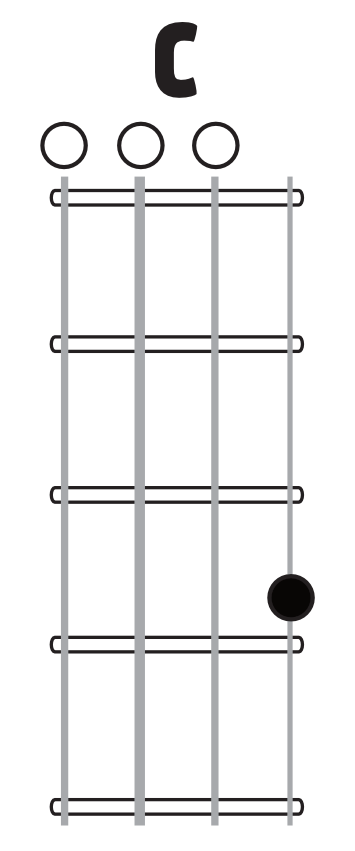
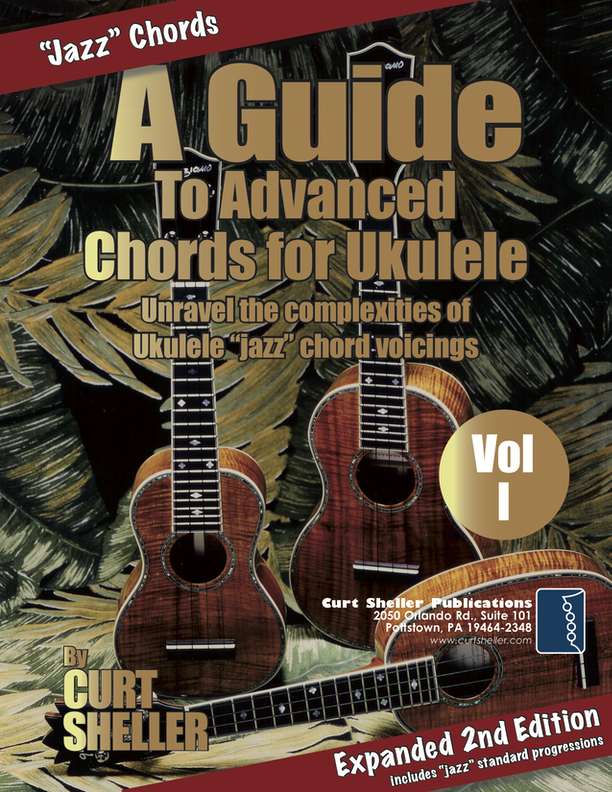
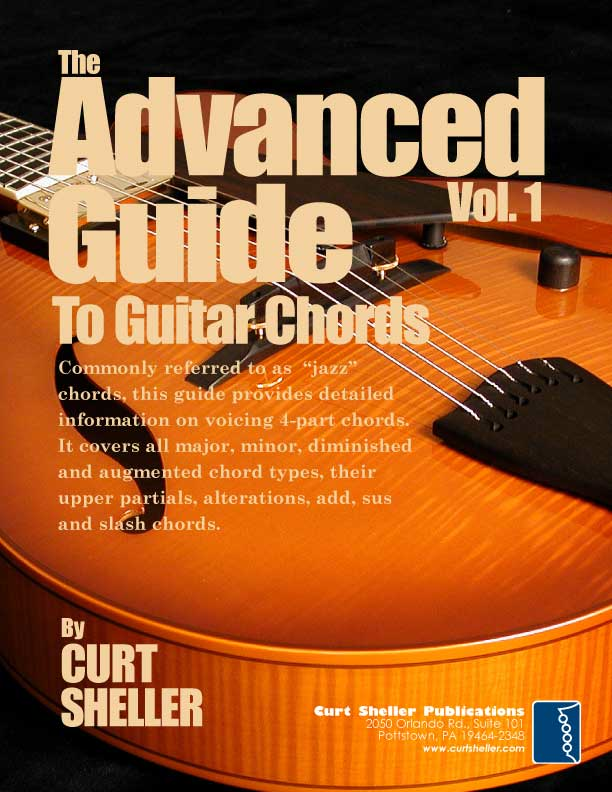
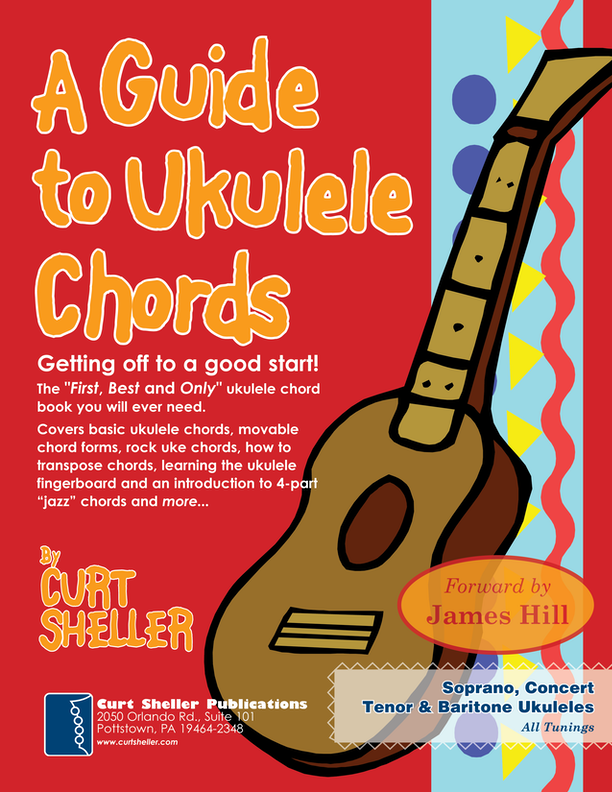
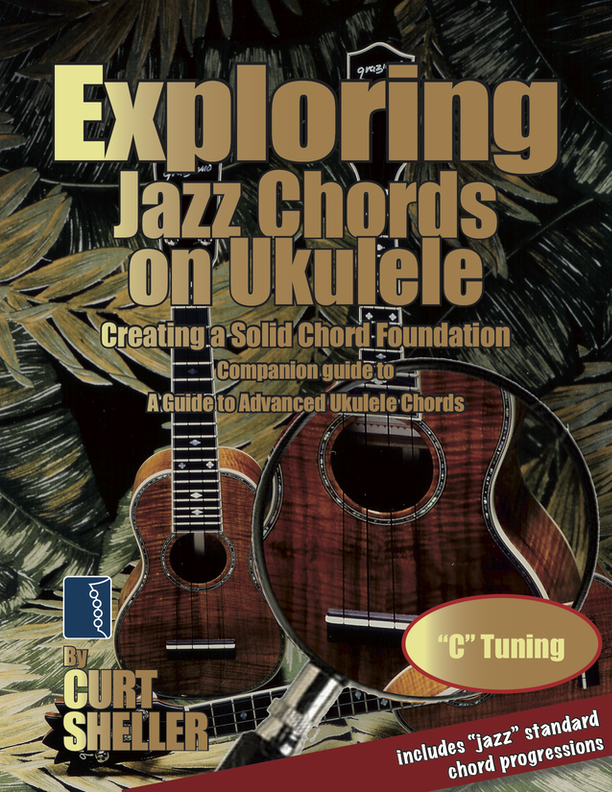
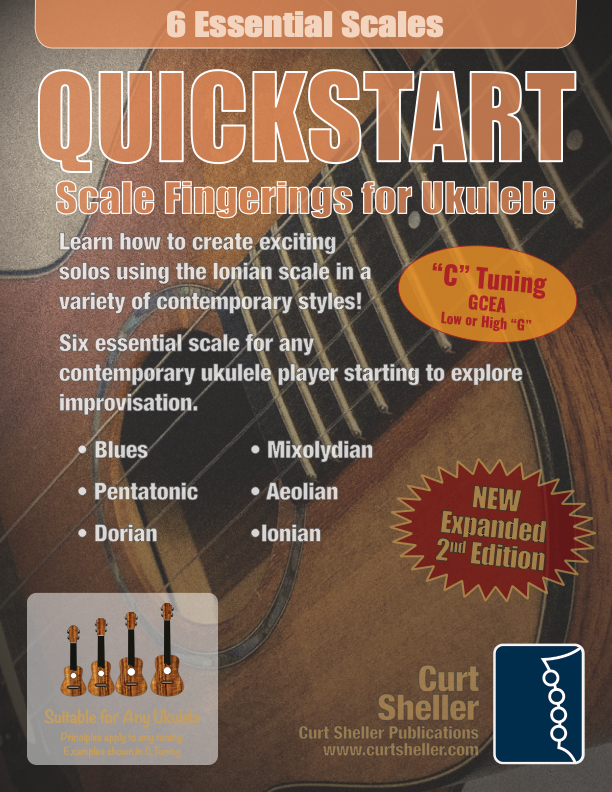
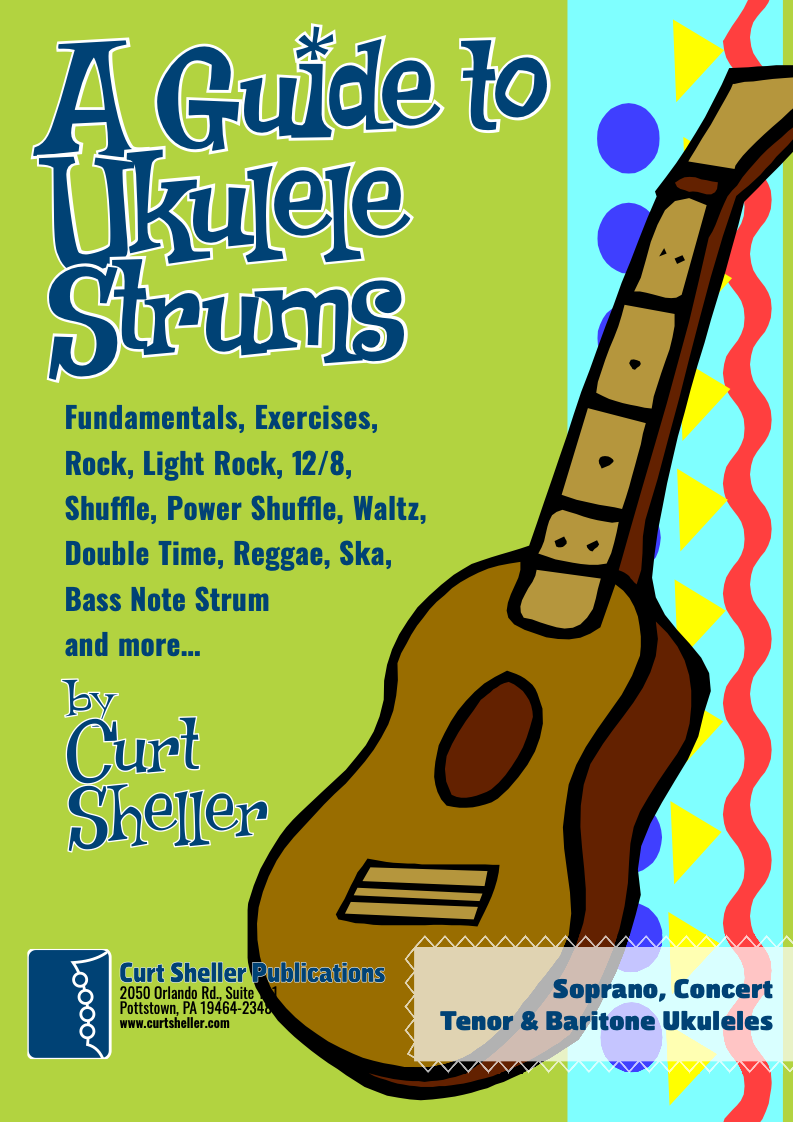
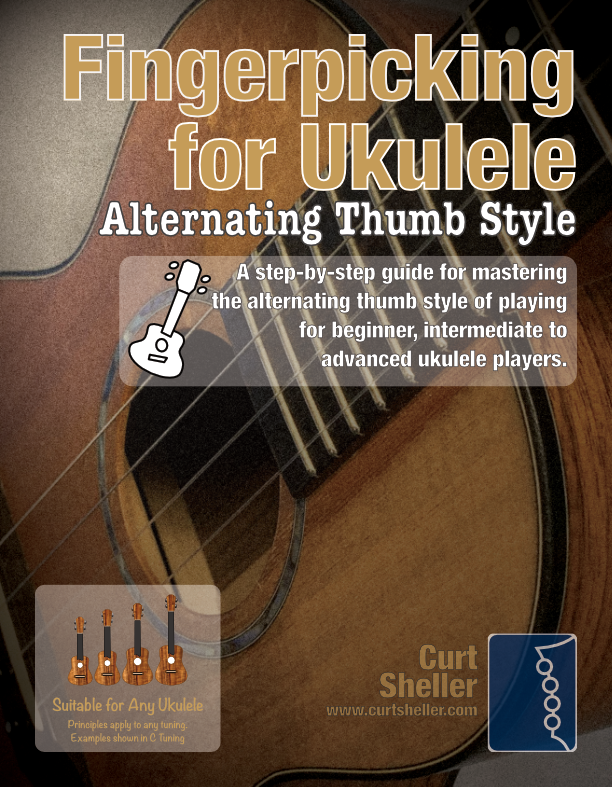










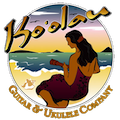




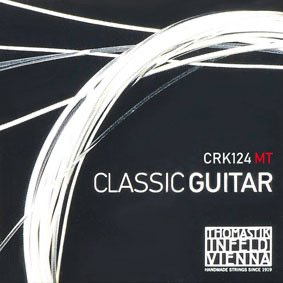
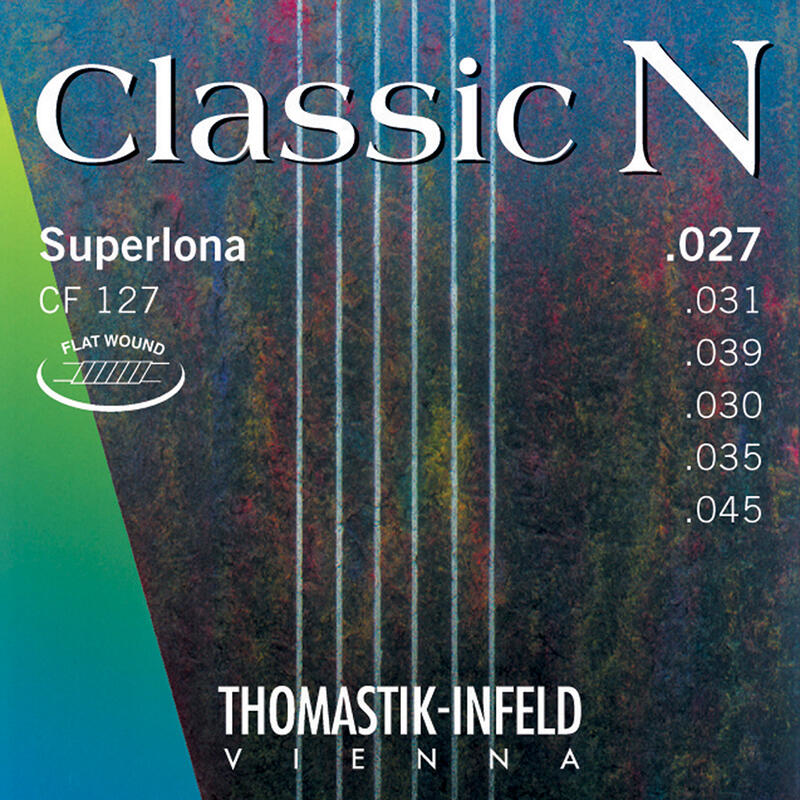

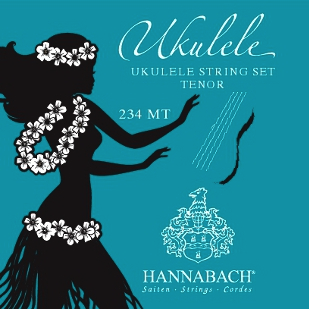







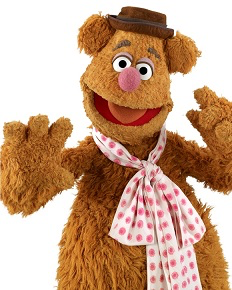
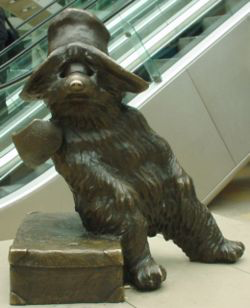


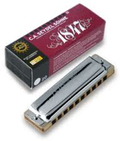






 supportukrainenow.org
supportukrainenow.org
